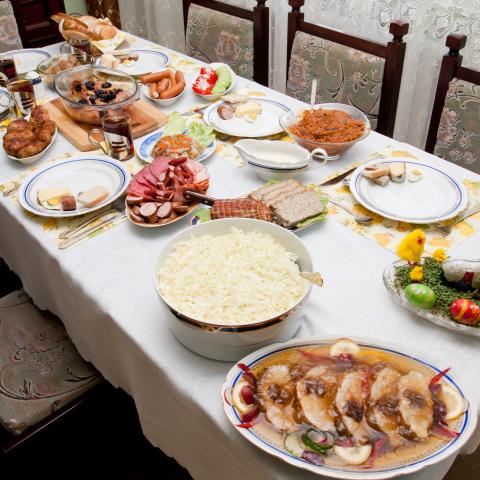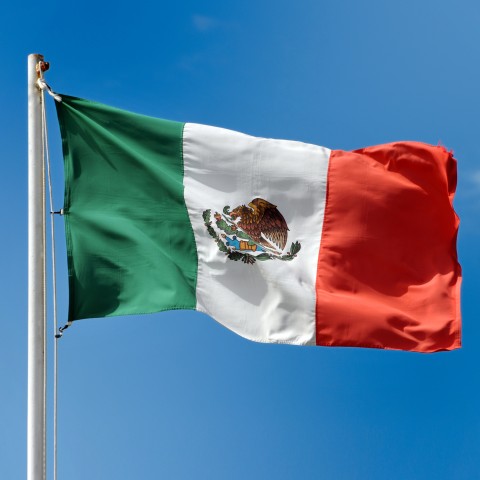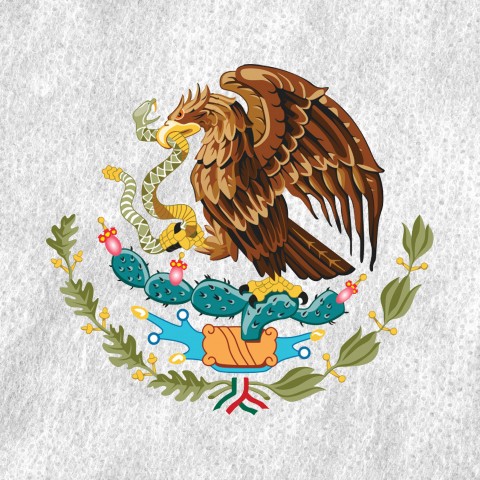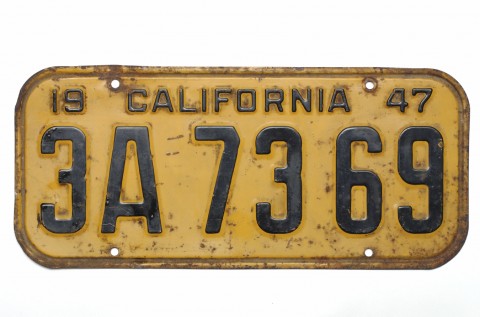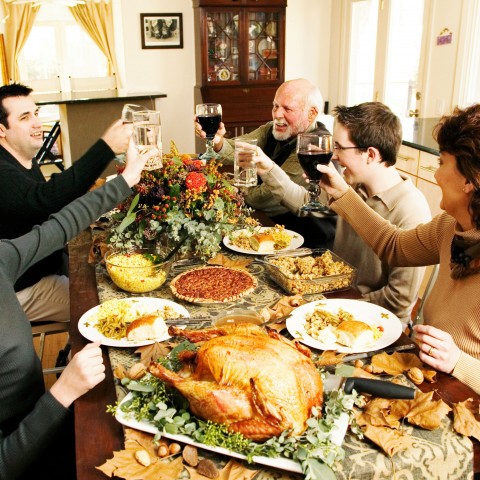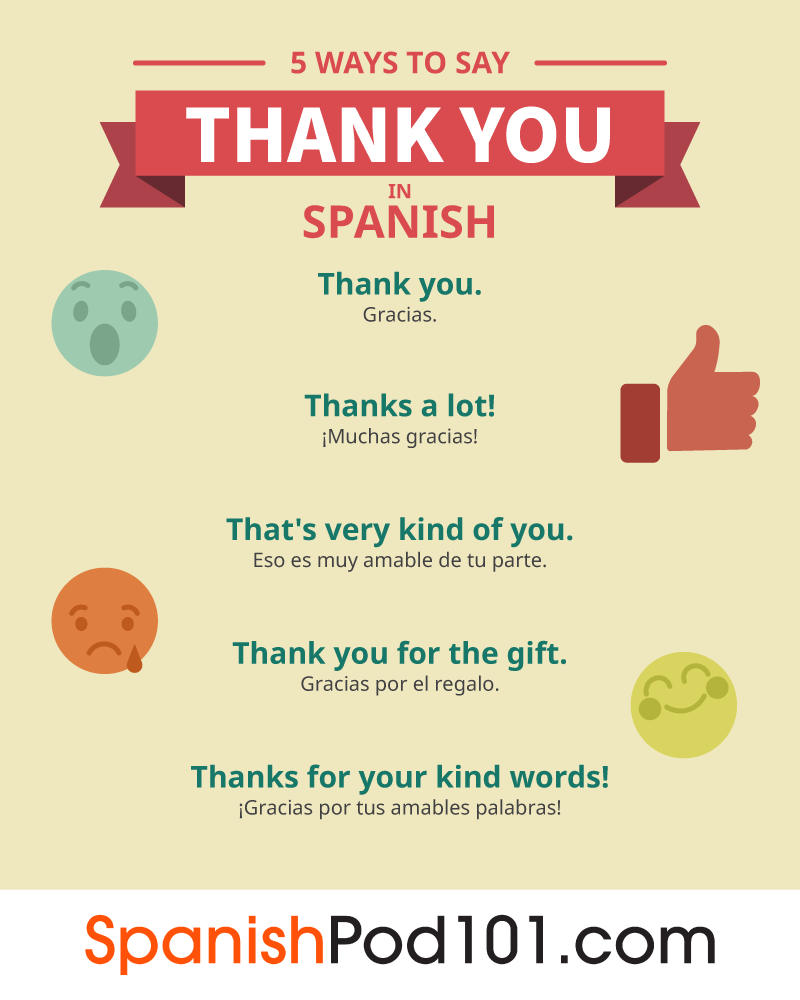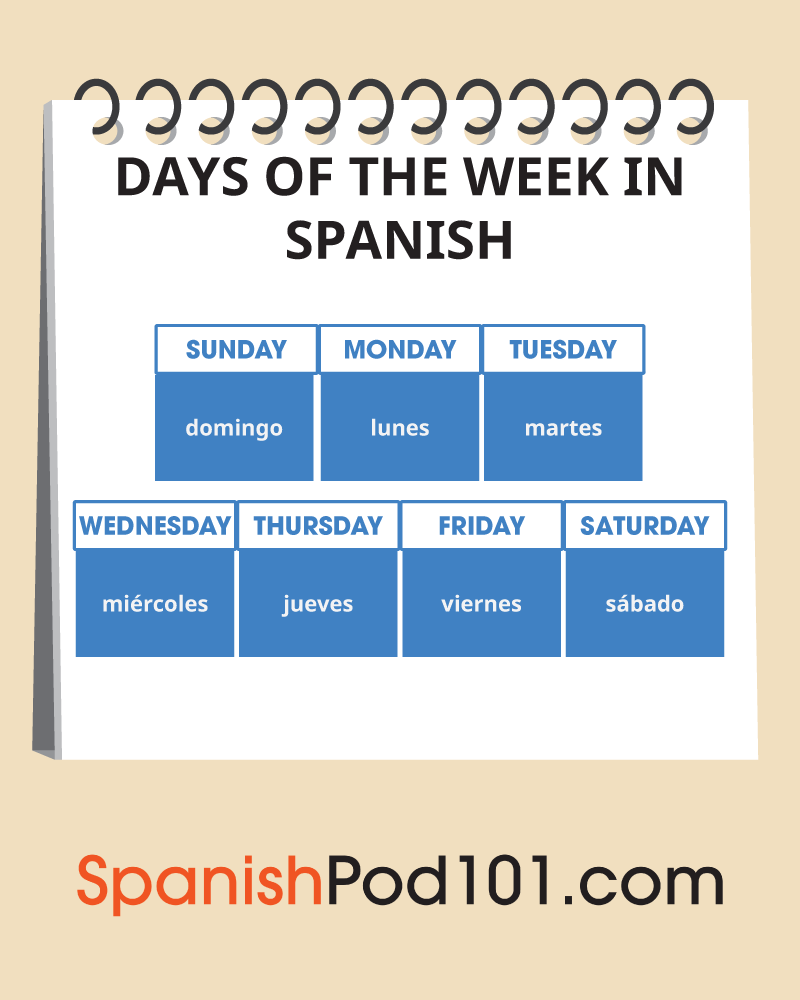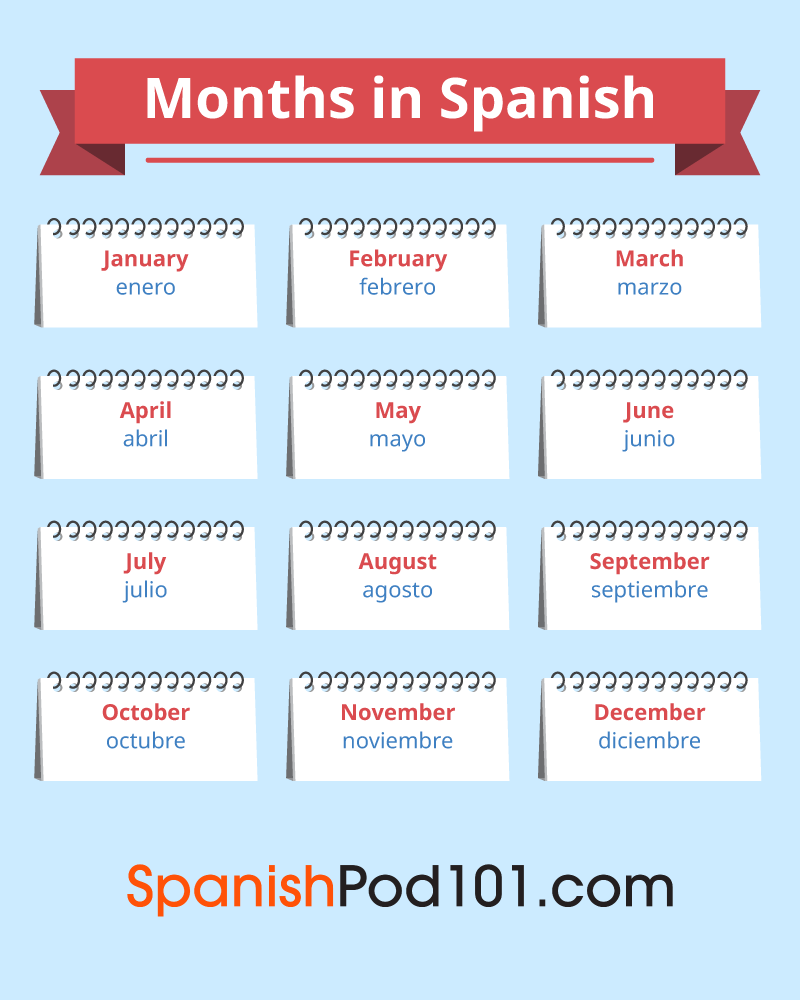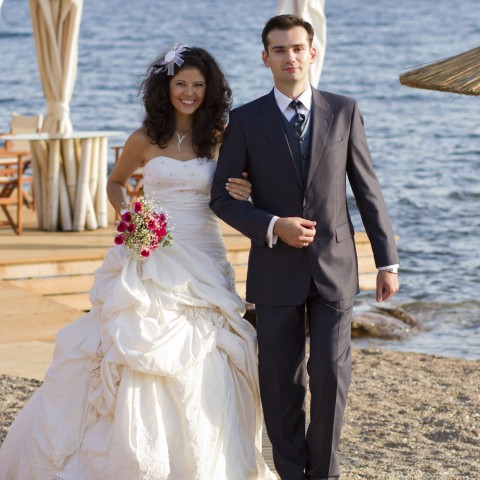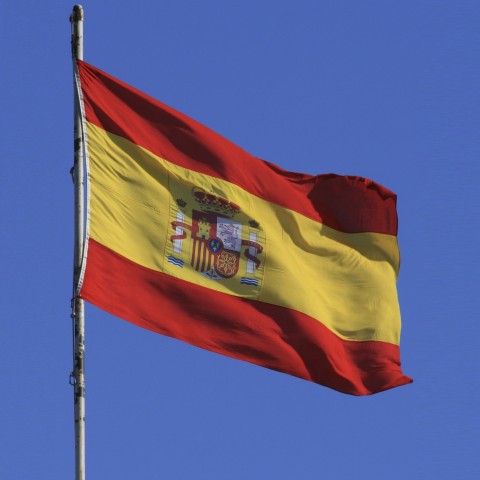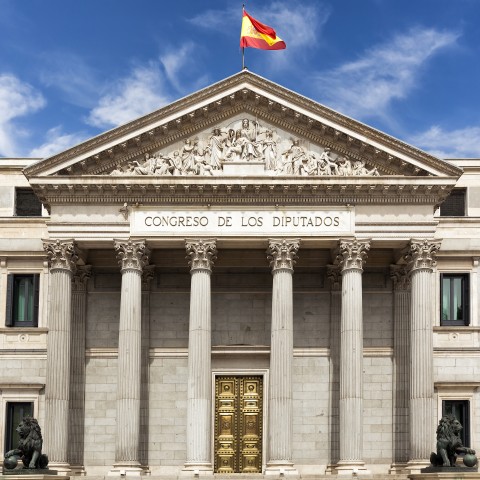Semana Santa, or Holy Week in Spain, is a Christian holiday season widely celebrated throughout the country. This holiday has a long history in Spain, and traditions today are a mix of the old and new.
In this article, you’ll learn what the most important holy days of this week represent, how the Spanish celebrate Holy Week as a whole, and more facts about Spanish Holy Week.
Let’s get started!

1. What is Holy Week?
In Spain, Holy Week is a major celebration period that starts on Palm Sunday and ends the day before Easter. Thus, this week is composed of six very important days for Christian Catholics in the country. However, four of these days tend to be more fervently celebrated than the others:
- Palm Sunday (Domingo de Ramos). This holy day is observed in celebration of Jesus’ arrival into Jerusalem a week before his Resurrection from the dead (Easter).
- Holy Wednesday (Miercoles Santo). People observe this holy day in commemoration of Judas’ betrayal of Jesus.
- Good Friday (Viernes Santo). On this holy day, people in Spain commemorate the passion and death of Jesus.
- Easter Sunday (Domingo de Pascua). This is the day on which Jesus is said to have been resurrected.
Later in this article, we’ll go over what Holy Week traditions in Spain look like for each of these holy days.
-
→ Do you want to learn some more relevant vocabulary? Check out SpanishPod101’s Religion vocabulary list (Mexican Spanish).
2. When is Holy Week in Spain?
The start and end dates for Holy Week vary from year to year. For your convenience, here’s a table of this holiday’s start and end dates for the next ten years.
| Start Date | End Date | |
|---|---|---|
| 2020 | April 5 | April 11 |
| 2021 | March 28 | April 3 |
| 2022 | April 10 | April 16 |
| 2023 | April 2 | April 8 |
| 2024 | March 24 | March 30 |
| 2025 | April 13 | April 19 |
| 2026 | March 29 | April 4 |
| 2027 | March 21 | March 27 |
| 2028 | April 9 | April 15 |
| 2029 | March 25 | March 31 |
3. How is Holy Week Celebrated in Spain?
The Four Most Important Days and Traditions
As mentioned earlier, there are four days during the week which are considered the most important. Thus, most of the major celebrations take place on these days.
On Palm Sunday, people bring palm or olive branches to the church to be blessed in commemoration of Jesus’ arrival in Jerusalem. Because Holy Wednesday commemorates Judas’ betrayal of Jesus, citizens in some parts of Spain wear black robes and hoods, carrying percussion instruments to fill the day and night with the sound of drums. On Good Friday, the day of Jesus’ passion and death, people put on representations of the Vía Crucis, or “Stations of the Cross.” Further, meat consumption is forbidden on this day.
The most important of these holy days is that of Easter, or Pascua. In some regions of Spain, people paint colorful eggs, while others perform more traditional rituals such as burning straw dolls.
Food and Cuisine for Holy Week
For Holy Week in Spain, traditions often involve food. The traditional Holy Week cuisine is known for its austerity, though there are a few common dishes such as garlic soup or salted cod. Cod is used to make croquettes, doughnuts, and fritters; another popular dessert is the Easter cake.
-
→ Getting hungry already? Study up on 10 Spanish Foods you’ll love!
Holy Week Parades and Processions
Perhaps the most spectacular celebrations for Holy Week take place in southern Spain. This is where massive, well-funded parades are put on by the brotherhoods for all to see. If you happen to watch one of these parades, the big conical-shaped hats may get your attention right away. These are called capirotes, and they originated in the Inquisition. The Catholic Church used to put a similar type of hat on the condemned during the Middle Ages, except it had paintings on it that denoted a person’s crime or punishment.
Another thing you can expect to see is a Spanish Holy Week procession. During such a procession, Nazarenes, bearers, and penitents go forth. The Nazarenes are believers who wear robes that denote the color of their brotherhood, the bearers are those who carry the heavy figures on their shoulders and neck, and the penitents are believers who mortify themselves in some way in order to remove themselves from guilt or to ask favor.
4. Good Luck
For Holy Week, Spain has a fascinating trick for getting good luck. Do you know what it is?
Wear something new! This is a very well-known custom, and there’s even a proverb that says: “On Palm Sunday, he who does not wear something new, does not have hands.”
It doesn’t matter so much what type of clothing you wear, as long as it’s new.
-
→ Here are some words you’ll need when buying new Clothing Accessories in Spanish.
5. Essential Holy Week Vocabulary
Ready to review some of the vocabulary words from this article? Here’s a list of the most important Spanish words and phrases for Holy Week!
- Viernes Santo — “Good Friday”
- Pascua — “Easter”
- Semana Santa — “Holy Week”
- Procesión — “Procession”
- Vía Crucis — “Stations of the Cross”
- Resurrección — “Resurrection”
- Domingo de Ramos — “Palm Sunday”
- Jueves Santo — “Holy Thursday”
- Sábado Santo — “Holy Saturday”
- Domingo de Pascua — “Easter Sunday”
- Crucifixión — “Crucifixion”
- Palmón — “Palm”
To hear the pronunciation of each word, and to read them alongside relevant images, be sure to check out our Spanish Holy Week vocabulary list!
Final Thoughts
We hope you enjoyed learning about Spain’s Holy Week with us, and that you took away some valuable cultural information.
Do you celebrate Holy Week in your country? If so, are celebrations similar or quite different from those in Spain? We look forward to hearing from you in the comments!
If you’re fascinated with Spanish culture and just can’t get enough, we recommend that you check out the following pages on SpanishPod101.com:
- Five Things You Should Know About Spanish-Speaking Cultures
- How to Celebrate Corpus Christi in Spain
- Running of the Bulls: San Fermin Festival in Spain
- Tomato Fight: Spain’s La Tomatina Festival
- Learn Spanish with Spanish Shows on Netflix
That should be enough to quench your thirst for cultural knowledge for a little while, but for even more great learning resources, create your free lifetime account today. SpanishPod101.com has tons of fun and effective lessons for learners at every level, so there’s something for everyone.
We look forward to having you! 🙂

Día de la Bandera: Celebrating Mexican Flag Day
On Mexican Flag Day (Dia de la Bandera), the people of Mexico celebrate their country’s flag and the aspects of independence it depicts. This is a significant holiday in Mexico, and one draped in colorful symbolism.
In this article, you’ll learn about National Flag Day, Mexico’s gradual victory toward independence from Spain, and more fun facts about the Flag of Mexico. Let’s get started!

1. What is National Flag’s Day in Mexico?
In Mexico, National Flag Day is a day set aside to honor the Mexican Flag. This holiday has its origins in 1935, when a Bank of Mexico employee (Benito Ramírez) set up a special honor guard to celebrate the Flag of Mexico. Five years later, in 1940, National Flag’s Day became an official holiday at the bidding of then-President Lázaro Cárdenas.
In addition to the Flag of Mexico itself, people commemorate the events leading up to Mexico’s independence from Spain and the Plan of Three Guarantees that came along with this independence. The Mexican Flag is central to these themes, with each of its three colors representing one of the guarantees and other aspects of Mexico’s freedom. (We’ll go more into detail about Mexico’s flag later!)
2. Mexican Flag Day’s Date
Each year, Mexicans honor their country’s flag on February 24, which is the date in 1821 that the Iguala Plan came into effect and the end of the War of Independence was signed.
3. The Mexican Flag Day Celebration
In Mexico, Flag Day celebrations aren’t very elaborate, and because this is not a public holiday, many people still need to go to work and school on this day. While there aren’t many Mexican Flag Day activities, some people are still able to enjoy watching the military raise a giant Mexican Flag in celebration.
If you happen to be in the country on February 24, Mexican Flag Day, expect to see the streets and buildings decorated with a sea of Mexican Flag colors.
-
→ Interested in learning more about celebrations and festivities in Spanish-speaking countries? Check out this lesson by SpanishPod101!
4. The Mexican Flag – Colors and Symbolism
As you probably know, the Mexican Flag colors are green, white, and red. Do you know what they stand for, though?
Well, when the flag was first created, the meanings were a little bit different than they are today.
| 1821 | Today | |
|---|---|---|
| Green (Verde) | Independence from Spain | Hope (Esperanza) |
| White (Blanco) | Catholicism | Purity (Pureza) |
| Red (Rojo) | Unity and Equality | Blood (Sangre) |
The first set of color meanings directly relates to the Three Guarantees mentioned earlier. These guarantees were that Mexico would: be independent of Spain, claim Catholicism as its religion, and live in unity and equality with each other (and with the Spaniards in Mexico).
Curious about the design? The Mexican Flag’s design features an eagle standing on top of a cactus while eating a snake. It might sound pretty weird, but it’s based on a story about Aztecs who stumbled upon a similar scene and, believing it to be a sign from the gods, decided to build their empire in that very spot.
-
→ If you want to learn some Spanish vocabulary related to religion, SpanishPod101 has you covered!
5. Must-Know Vocabulary for Dia de la Bandera
Ready to review some of the vocabulary words from this article? Here’s a list of the most important words for Mexican Flag Day!
- Sangre — “Blood”
- Águila — “Eagle”
- Día de la Bandera — “National Flag’s Day”
- Verde — “Green”
- Blanco — “White”
- Rojo — “Red”
- Esperanza — “Hope”
- Bandera — “Flag”
- Escudo de armas — “National coat of arms”
- Unidad — “Unity”
- Símbolo — “Symbol”
To hear each of these vocabulary words pronounced, and to read them alongside relevant images, be sure to check out our Mexican National Flag’s Day vocabulary list!
Final Thoughts
We hope you enjoyed learning about Dia de la Bandera with us, and that you learned something new today. What does Flag Day look like in your country? What does your country’s flag mean? Tell us about it in the comments!
Mexican culture is colorful and unique. If you’re interested in learning even more about it, check out the following pages on SpanishPod101.com:
- Five Things You Should Know About Spanish-Speaking Cultures
- SpanishPod101’s Guide to Etiquette in Spanish-Speaking Countries
- Celebrating Grandparents’ Day in Mexico
- Mexican Revolution Day (Vocab List)
- Essential Idioms That Will Make You Sound Like a Native Speaker
- Tourist Attractions in Mexico
Whatever your reasons for developing an interest in Mexican culture or the Spanish language, know that SpanishPod101.com is the best way to expand your knowledge and improve your skills. With tons of fun lessons for beginners, intermediate learners, and more advanced students, there’s something for everyone!
Create your free lifetime account today, and start learning Spanish like never before.

Spanish Conjunctions Guide: Link Your Thoughts Together
Conjunctions in Spanish are a crucial part of learning Spanish. They allow you to connect your thoughts, make comparisons, and put sentences together.
Clarity is very important when you’re learning a new language. Not only because the other person will understand what you’re saying, but also because it will build your confidence.
Do you remember when you first decided to learn Spanish? You may still remember how frustrating it was to try having a fluid conversation with a native speaker. You were trying to find the small words to express yourself properly.
We all find ourselves saying: “I have a brother. I have a sister. I have a mother. I do not have a father.”
Well, this is what Spanish conjunctions will do for you. Learning Spanish conjunctions will help you string sentences together: “I have a brother and a sister and a mother, but I do not have a father.”
In this article, you’ll find our Spanish conjunctions list that will show you what small Spanish conjunction words can do for you.
Your thoughts will come out nicely, you’ll be easily understood, and your confidence will increase much faster since you’ll sound like, at the least, an upper-intermediate Spanish learner.

Table of Contents
- Spanish Conjunctions Review: What are Spanish Conjunctions?
- Spanish Conjunctions to Correlate Similar Thoughts
- Spanish Conjunctions to Express Condition
- Spanish Conjunctions to Express Cause
- Spanish Conjunctions to Express Opposition
- Spanish Adverbial Conjunctions
- Spanish Conjunctions that Offer Alternatives
- Spanish Subordinating Conjunctions
- Spanish Conjunctions that Allow You to Give Reasons
- Spanish Subjunctive Conjunctions
- Conclusion
1. Spanish Conjunctions Review: What are Spanish Conjunctions?
The first thing we do when trying to learn a new language is to put simple sentences together: “I want a coffee.” Now, it’s time for you to learn how to put these simple sentences together: “I want a coffee and a muffin,” or “I like muffins, but I prefer a cookie.” That’s what Spanish conjunctions are, and how they can help you.
A conjunction in Spanish is a word that helps you create relationships between words, phrases, clauses, and sentences.
Keep in mind that some conjunctions in Spanish may not have meaning by themselves. They have a different meaning in different contexts, which is why it’s important to know what their functions are and how to use them. Throughout this article, we’ll go over some Spanish conjunctions rules to give you a better idea about their use.
So let’s see some of them in our Spanish conjunctions list!
2. Spanish Conjunctions to Correlate Similar Thoughts
This is the most important—and easy—conjunction in Spanish: y, meaning “and.” It allows you to add more than one sentence together.
We actually overdo this Spanish conjunction quite often. Take a look at what we mean:
- Me gusta la comida española y la italiana y la francesa y la griega.
“I like Spanish food and Italian food and French food and Greek food.”
- Santiago pidió de comer y pagó toda la cuenta.
“Santiago ordered the food and paid the whole bill.” - El policía me pidió el carné, anotó mis datos y me puso una multa.
“The police officer asked for my licence, wrote down my information, and I got a fine.”
This use of this Spanish conjunction has an exception where you have to use e instead of y. They mean exactly the same thing, but if your next word or sentence starts with the vowel –i-, you have to use e instead of y.
Why? Well, –i– and –y– in Spanish sound the same, so you have to use –e– to emphasize that you’re adding more information. Let’s see how:
- María es guapa e interesante.
“Maria is beautiful and interesting.” - Daniel e Isabela se acaban de conocer.
“Daniel and Isabela just met each other.”
However, if the next word starts with –h-, although this letter has no sound in Spanish, you can use –y-.
- He comprado agua y hielo.
“I bought water and ice.” - El puente es de acero y hierro.
“The bridge is from steel and iron.”
3. Spanish Conjunctions to Express Condition
This is our English-Spanish conjunctions list for conjunctions that are used to express a condition. When you use these Spanish conjunctions, you’re expressing a specific condition that must be met for the rest of the sentence to be true or possible.
- Si: “If”
Si vas a ir al supermercado, compra leche.
“If you are going to the supermarket, buy milk.”
- En caso de que: “If”; “in case of”
This Spanish conjunction has the same meaning as the English word “if,” but in Spanish it’s used at the beginning of the sentence.
En caso de que decidas venir a la fiesta, compra más cervezas.
“If you decide to come to the party, buy more beers.”
- Como: “If”
We included this word to our conjunctions in Spanish list because in English, you can just use “if,” but in Spanish this word has a different meaning that the phrase above. You use como if you want to warn someone about something. Let’s see how:
Como no vengas a casa temprano, no sales mañana otra vez.
“If you don’t come home early, you won’t go out again tomorrow.”
- Siempre que: “If”; “provided”
Siempre que seas honrado todo te saldrá bien.
“Provided you are honest, everything will be fine.”
4. Spanish Conjunctions to Express Cause
These should be on your Spanish conjunctions worksheets because you need them to express the results and consequences of what you’ve said or done.
- Así que: “So”
Acabo de llegar a casa así que te llamo luego.
“I have just arrived home, so I will call you back later.”
- Luego: “So”
This Spanish conjunction may mean the same as Así que, but it’s less common. You’ll see it more in books or literary articles than in speech.
No tengo efectivo, luego no podré comprarme un café.
“I do not have cash on me, so I can’t buy myself a coffee.”
- De modo que: “So”; “so that”
Salgamos de casa ya, de modo que lleguemos temprano al cine.
“Let’s leave home now so we can arrive early for the movie.”
5. Spanish Conjunctions to Express Opposition
This conjunction list will help you express contrast.
- Pero: “But”
Voy a ir a tu fiesta pero primero tengo que ir a casa.
“I am going to your party, but I have to go home first.”
- Aunque: “Although”; “even though”
Seguiré buscando trabajo aunque sea difícil
“I will carry on looking for a job, even though it’s still difficult.”
- Sin embargo: “However”
Me gusta el helado, sin embargo prefiero el yogur cuando estoy en casa.
“I like ice cream; however, I prefer yogurt when I am home.”
- No obstante: “However”; “nevertheless”
Nos lo pasamos bien en la primera cita, no obstante, no la volví a ver.
“We had a good time on our first date; however, I didn’t see her again.”
- Por lo demás: “Otherwise”; “apart from that”
No creo que la conclusión esté bien; por lo demás, el ensayo está muy bien.
“I don’t think the conclusion was good; apart from the conclusion, the essay is fine.”
- Excepto: “Except for”
Me gustan todas las verduras excepto la patatas.
“I like all vegetables except for potatoes.”
6. Spanish Adverbial Conjunctions
Spanish adverbial conjunctions are also known as conjunctive adverbs. They’re adverbs with the characteristics and functions of conjunctions. They join two or more words together, and are used when you want to express the result, purpose, or consequences of something.
Adverbial conjunctions show continuity, joined under casual or situational dependence. The most-used adverbial conjunctions in Spanish are:
- Cuando: “When”; “if”; “as”; “whenever”
Toda la comida estaba preparada cuando tú llegaste.
“All the food was prepared when you arrived.”
- Mientras: “While”
Puedes ir comprando palomitas mientras compro las entradas.
“You can buy the popcorn while I’m buying the tickets.”
- Donde: “Where”
Vivo muy cerca de donde tú trabajas.
“I live pretty close to where you work.”
- Como: “As”; “like”
Tengo el pelo rizado como tu madre.
“I have curly hair just like your mom.”
7. Spanish Conjunctions that Offer Alternatives
These conjunctions in Spanish help you choose between different alternatives.
- O: “Or”
¿Quieres café o té?
“Would you like tea or coffee?”
- U: “Or”
U has the same function that o does, but it’s used whenever the next word starts with –o. This is just like the –e to –y rule from earlier in this article. They sound the same, so you have to change the Spanish conjunction to hear the alternative given.
¿Quieres ir a California u Orlando?
“Do you want to go to California or to Orlando?”
¿A qué hora comienza la película, siete u ocho?
“What time does the movie start, at seven or eight?”
8. Spanish Subordinating Conjunctions
Subordinating conjunctions in Spanish allow you to join an independent sentence with a dependent sentence.
A dependent sentence alone wouldn’t make any sense without the independent one, thus these Spanish subordinating conjunctions will help you make sense of the whole sentence, situation, or event.
- Porque: “Because”
No voy a ir al gimnasio porque me siento muy enferma.
“I am not going to the gym because I am not feeling well.”
- Pues: “Since”
Deberíamos ir a cine el miércoles, pues creo que es más barato que el sábado.
“We should go to the movies on Wednesday since I think it’s cheaper than Saturday.”
- Ya que: “Since”; “seeing that”
Voy a ir al mercadillo, ya que tengo que comprar verduras.
“I am going to the street market, since I have to buy vegetables.”
There are other synonyms with the same use as the ones above: dado que, por cuanto, a causa de que, por lo cual… They would be the same translations in English: “because,” “therefore,” “since…”
9. Spanish Conjunctions that Allow You to Give Reasons
This type of conjunction in Spanish allows you to give a reason for why something happens the way it does.
These useful Spanish conjunctions can help you answer the question ¿Por qué?, or “Why?” As for the first one on the list, you’ll simply use the two words together without the accent.
- Porque: “Because”
No voy a la fiesta porque tengo que trabajar mañana en la mañana.
“I am not going to the party because I am working tomorrow morning.”
- Ya que; puesto que; en vista de que: “Since”; “because”
No me he comprado un coche ya que no tengo dinero.
“I did not buy myself a car because I do not have any money.”
No vamos a ir al parque puesto que está lloviendo.
“We are not going to the park because it is raining.”
En vista de que no quieres comer nada, no te daré el helado tampoco.
“Since you haven’t eaten anything, I won’t give you ice cream either.”
- Pues: “Because”; “since”; “for”
Hemos decidido vender el coche, pues nos vamos a Inglaterra.
“We have decided to sell the car because we are going to England.”
- Como: “Since”
Es mejor que cambies de profesión, como has pensado empezar de nuevo.
“It’s better to change your profession since you’ve thought to start again.”
10. Spanish Subjunctive Conjunctions
With some Spanish conjunctions, the subjunctive is needed to express a hypothetical uncertainty as to whether an action or event will take place, or whether or not a situation will happen.
- A menos que: “Unless”
El gato se quedará dormido a menos que el ratón salga de su escondite.
“The cat will fall asleep unless the mouse gets out of its hideaway.”
- En caso (de) que: “In case”
Voy a dejar las llaves del coche en caso de que quieras usarlo.
“I am going to leave the car keys in case you want to use them.”
- Antes de que: “Before”
Antes de que salgas corriendo, déjame la comida preparada.
“Before you run out, leave the food ready for me.”
- Con tal de que: “So that”
Limpié la casa con tal de que no discutiéramos.
“I cleaned the house so that we wouldn’t fight.”
- Para que: “So that”
Voy a ir a supermercado para que tengas pan para mañana.
“I am going to the supermarket so that you have bread for tomorrow.”
- Sin que: “Without”
Habían pasado tres semanas sin que Juan viera a Silvia.
“It had been three weeks without Juan seeing Silvia.”
11. Conclusion
Do you want to sound like a confident Spanish speaker? After this article, and lots of practice with important Spanish conjunctions, you will! These basic Spanish conjunctions will help you link different parts of sentences together. You can use them to include ideas in your sentences, or to exclude them. You have to be very clear about that; after this post, you get it, right?
Here at SpanishPod101, you can find many resources, forums, and even a Spanish conjunctions worksheet for extra Spanish conjunctions practice to help you learn at your own speed. Why don’t you give it a try? You lose nothing and gain more knowledge about our Spanish conjunctions list.
Happy learning!

SpanishPod101’s Guide to Etiquette in Spanish-Speaking Countries
When learning about etiquette in Spanish-speaking countries, keep in mind that every culture is different, and even neighboring countries might have very different customs from one another. Sometimes, what might seem normal or even polite to you could be interpreted as weird or rude in another country. In the same way, something you find rude might seem common to someone else. Don’t worry, though. We’re here to help you not make the same mistakes other people have made!
Maybe one of the first things you need to know here is that “etiquette” in Spanish is called protocolo or etiqueta. Even though protocolo is a bit more common, etiqueta is equally valid, so you can stick to whichever word you prefer!
Another thing you might want to do when trying to find out about Spanish etiquette is to do some online research on it, which is completely understandable. However, we did some reading too, and we want to warn you that if you do so, you might find Spanish “rules” of etiquette that are very outdated and not appropriate anymore.
For example, we read that women aren’t allowed to cross their legs or wear shorts, which is completely false nowadays. Trust us, you definitely can. Maybe not for formal occasions, but if you want to survive a Spanish summer, you might want to wear shorts when you go out with friends or family.
Here’s our practical, relevant guide on etiquette in Spanish-speaking countries. Read up and wow your hosts with your Spanish social etiquette!
Table of Contents
- Do’s and Don’ts for Dining
- Do’s and Don’ts for Sightseeing
- Do’s and Don’ts for Greetings
- Do’s and Don’ts for Visiting a House
- Do’s and Don’ts When Riding Public Means of Transportation
- Do’s and Don’ts for Business
- Do’s and Don’ts for Celebrations
- How SpanishPod101.com Can Help You Learn Spanish

1. Do’s and Don’ts for Dining
Eating is an important part of any culture, but dining etiquette can be really different from one country to another. This makes knowing the most basic Spanish meal time etiquette essential. Here are the most basic Spanish dining etiquette rules to keep in mind.
- No sorbas (Don’t slurp): While in other countries such as Japan, this is considered polite, it’s rude to slurp in Spain.
- No eructes (Don’t burp): Just like slurping your food, burping is considered rude in Spain. Some people definitely burp in public, but trust us, no one likes those people.
- No pongas los codos encima de la mesa (Don’t rest your elbows on the table): It’s allowed for your arms to be on the table, as long as your elbows aren’t touching it.
- No insultes la comida española (Don’t insult Spanish cuisine): While this might sound obvious, there are ways of insulting Spanish cuisine that you might not realize are offensive to Spaniards. Take this example: In 2016, Jamie Oliver made the mistake of adding chorizo to a paella and posting it online. To save you from reading the entire article, we all went mad! In case you’re wondering, chorizo doesn’t go in paella. To this day, we still haven’t forgiven him. We could give you more examples, but they’re all quite similar: someone decides to cook a Spanish recipe, but gets a little too creative and makes the entire country of Spain go berserk. Just stick to our recipes; they’re already amazing and don’t need changes!
- Deberías esperar hasta que todos estén sentados y con comida en sus platos (You should wait until everyone is seated and has food on their plates): It’s considered rude to start eating if there are people at the table who haven’t been served their food. Or, in the case of dining in someone’s house, wait until everyone, including the guest, is sitting down.
- Siempre deberías tener las manos visibles (Your hands should always be visible): While your elbows shouldn’t be on the table, as we mentioned before, hands should be.
When you’re dining at a restaurant, there are some other specific Spanish restaurant etiquette rules you need to know. For instance, is tipping expected in Spain?
- Dejar propina es opcional (Tipping is optional): Spain isn’t like other countries such as the USA, where tipping is compulsory even if your server didn’t do a good job—and not only that, but you actually need to know math to know how much you need to tip! Tipping in Spain is seen as a nice gesture, but people usually only do it when they feel like they need to reward their server for a good job. And when you do so, you don’t need to think of what percentage is appropriate. Rather, it’s more about just giving them a couple of coins, whatever you have in your wallet, as you see fit.
If you’re dining in someone’s house, however, this is what you should keep in mind:
- Deberías esperar a que alguien te muestre tu asiento o a que el resto de gente empiece a sentarse (You should wait until someone shows you to your seat or until people start to sit down): The host will often let you know where you can sit.
- Deberías ofrecer tu ayuda al anfitrión (You should offer to help the host): This is considered polite, even though most of the time they’ll tell you not to worry and ask you to take a seat.
2. Do’s and Don’ts for Sightseeing
We don’t think we need to teach you basic Spanish protocol and etiquette when it comes to sightseeing, such as not cutting in line and respecting other people’s cultures, but some things might not be exactly the same everywhere.
For example, here’s something you should always keep in mind when you’re on an escalator. They normally have signs that explain what is prohibited, such as wearing flip-flops, but there’s one unspoken rule that’s never included on the signs but that everyone knows:
- Siempre deberías quedarte en el lado derecho (You should always stand on the right side): Unless you’re walking, you should always stay on your right whenever you’re on an escalator. It doesn’t matter if you’re going up or down: the left side is only for walking. Don’t use an escalator like the man in the picture, he’s doing it wrong!
Another matter that can be a little bit complicated if you’re not familiar with it is visiting a church. Here are a few Spanish culture and etiquette tips you should know if you want to visit a church or cathedral in Spain:
- No lleves pantalones cortos ni sandalias (Don’t wear shorts or sandals): This is common in most places of worship, but it’s good to remember.
- Deberías apagar o poner en silencio el móvil (You should turn off or silence your phone): Again, this is quite normal and shouldn’t surprise you.
- Deberías prestar atención a los carteles (You should pay attention to the posters): Churches usually have posters with signs that you should follow. For example, sometimes they’ll ask you not to take photos, or if you do, to always take them without flash.
3. Do’s and Don’ts for Greetings
What is Spanish greeting etiquette? We already taught you pretty much everything you need to know about greeting someone in Spanish in different situations in our article titled How to Say “Hello” in Spanish. But we thought we should remind you of a few non-verbal gestures you should or shouldn’t do when greeting someone. (If you’re wondering about Spanish phone etiquette, though, you’ll also find this in the above-mentioned article.)
- Deberías hacer contacto visual (You should make eye contact): Unlike in some other cultures, in Spain, eye contact is seen as a symbol of confidence. However, keep in mind that while we advise you to make eye contact, you shouldn’t make it extreme. Remember to blink and don’t have your eyes wide open like a crazy person. You want to look confident, not creepy!
- Si no estás seguro de qué deberías hacer, espera unos segundos (If you’re unsure what you should do, wait a few seconds): We don’t want this greeting to become an awkward encounter, but waiting a few seconds until the other person starts the greeting won’t hurt anyone.
4. Do’s and Don’ts for Visiting a House
Etiquette when visiting a house also tends to change from country to country. Here are a few Spanish etiquette tips that you’ll find helpful when you’re invited to someone’s house:
- No te quites los zapatos a menos que te digan lo contrario (Don’t take your shoes off unless told otherwise): In many cultures, it’s common to take off your shoes when you enter a house, and sometimes even other kinds of buildings. In Spain, this isn’t very common, but it still might be preferred in certain households. So what we recommend is that you don’t take them off unless they specifically ask you to do so. If you’re unsure, you can always ask them, just in case!
- Deberías llevar un detalle (You should bring a small present): It’s common to bring something, such as a bottle of wine or some sort of sweets, especially if you’ve been invited for a meal. The word we used in Spanish is detalle, which literally means “detail,” and refers to something small yet thoughtful.
- Deberías hacer un cumplido a su hogar (You should compliment their home): The classic “You have a lovely home” should do the trick. To say this in Spanish, you could go for Tienes (if you’re visiting someone who lives alone) or Tenéis (if you’re visiting someone who lives with other people) una casa preciosa.
5. Do’s and Don’ts When Riding Public Means of Transportation
We think there are not that many rules when it comes to public transportation that differ from other countries, but we’ll remind you of a few of them. Here’s some practical information on Spanish taxi etiquette and how to act when on other means of transportation.
- Deberías saludar al conductor (You should greet the driver): Either on a bus or on a taxi, it’s considered polite to greet the driver when you get in—and of course, in the case of a taxi, also when you get out. In most public buses in Spain, the exit is only through the back, so you don’t see the driver again and therefore you don’t necessarily need to say goodbye. Of course, if you’re taking the train or the metro, you won’t see the driver, so you don’t have to greet anyone.
- Deberías ofrecer tu asiento a alguien que lo necesite más que tú (You should offer your seat to someone who needs it more than you): If you’re sitting down and someone enters who might need to sit down more than you do, you should offer them your seat. We’re referring, for example, to old people, handicapped people, pregnant women, among others. Out of politeness, they might refuse it sometimes, but it’s common and considered polite to insist a little bit more.
- Debes comprar un billete (You must buy a ticket): We don’t think we need to say this, but just in case, don’t forget to pay for your ticket! Or the ride, if you’re taking a taxi.
6. Do’s and Don’ts for Business
If you work in Spain or travel there for work, you might need a couple of tips, even though Spanish business etiquette is quite international.
- Deberías dar la mano (You should shake their hand): This is the basic rule for greeting someone in a business environment, but there is an exception. As we explained in our article about greetings, it’s common in Spain to kiss someone twice when greeting them. While in this context a handshake would be the usual greeting, if you’re greeting a woman who’s offering you her cheek, you should kiss her on her cheeks; if you’re a woman and you’re greeting a man who looks like he’s about to kiss you, don’t shy out and offer him your cheek. If you ignore this greeting, it might look like you want to avoid them, and we’re sure you don’t want to do that.
- No lleves ropa informal a menos que te digan lo contrario (Don’t wear casual clothes unless told otherwise): More often than not, you should wear formal yet simple clothes.
7. Do’s and Don’ts for Celebrations
Often, celebrations have more rules than we wish they had. We’ll show you a few basic Spanish etiquette and customs for celebrations, but sometimes these rules depend on the specific event, so you might have to ask whoever invited you to the event. For example, whether you should wear formal or casual clothes, or whether you can bring your kids or not.
Something that’s applicable to different kinds of celebrations is the act of making a toast. In Spanish, this is called brindar, and there are a couple of ways of saying “Cheers.” One of them is ¡Salud! and another one, which people tend to find interesting, is ¡Chinchín! Many people think this is an onomatopoeia that resembles the clashing of glasses, but as it turns out, it actually isn’t; it comes from Chinese. In some families, it’s considered bad luck for people to drink water in these cases, but it’s nothing you need to worry about if you don’t feel like drinking alcohol.
Spanish Wedding Etiquette
- Deberías comprar un regalo (You should buy a present): It’s common to get presents for the bride and groom, but remember that you’re not meant to bring it to the wedding. Sometimes, instead of getting them a present, you can transfer some money to a bank account that they will provide.
- No vayas de blanco (Don’t wear white): The only person who’s allowed to wear white is the bride.
Spanish Etiquette for Birthdays
If it’s your birthday:
- Invita a tus amigos a una comida (Invite your friends for a meal): Either breakfast, lunch, dinner, or something in between, it’s common to invite your friends (and/or family) to have a meal, and to pay for all of them. This can be at a restaurant or at your place, and it doesn’t need to be fancy or a big celebration. We’ll leave this up to you.
If it’s someone else’s birthday:
- Deberías llevar un regalo (You should bring a present): We guess this is common in most cultures, but it’s customary to bring a present for the person who’s celebrating their birthday.
Etiquette for Births
- Deberías llevar un regalo (You should bring a present): It’s common to bring a present for the new parents, either to the hospital if they’re family or close friends, or whenever you see them. The present is normally something for the newborn, but it can be something for the parents as well.
Spanish Funeral Etiquette
- Deberías dar el pésame (You should give your condolences): It’s common to say Lo siento (I’m sorry), but if you knew this person really well, their family might appreciate it if you said something slightly more personal, yet brief. Let them know you cared about them.
- Deberías presentarte (You should introduce yourself): If the family of the deceased person never met you before, you should introduce yourself to them and let them know how you knew him or her.
- No es necesario vestir de negro (It’s not necessary to wear black): Even though it’s still rather common, it’s not compulsory to wear black clothes anymore.
Something else you should know is that it’s common to bring flowers, and sometimes even flower crowns, as a group present.
For other celebrations and festivities, such as New Year’s Eve, you can check out our lesson on Spain’s New Year’s traditions, or another lesson on how to celebrate Christmas in Spain that might be interesting to know if you’re in Spain for the holidays.
8. How SpanishPod101.com Can Help You Learn Spanish
Keep in mind that no one will judge you if you don’t remember all of these rules we just listed. If you’re ever unsure what you can and can’t do, don’t hesitate to ask someone. They will perfectly understand that you’re foreign and not completely familiar with our traditions and customs yet. This is especially true in very specific celebrations, such as weddings, that don’t happen everyday.
Are any of the customs we went over similar to those in your country? We look forward to hearing from you in the comments!
At SpanishPod101.com, you can learn everything you need to know about Spain, its culture, and its language. From vocabulary lists to lessons, we have anything you might need. Join us and learn Spanish like never before!

Epifanía: Celebrating Epiphany Day in Spain
Epiphany Day in Spain is one of the most popular Christian holidays in the country. Each year, it’s met with an abundance of enthusiasm and many colorful traditions. In this article, you’ll learn about the Epiphany celebration in Spain as well as the stories behind the holiday.
At SpanishPod101.com, it’s our goal to ensure that every aspect of your language-learning journey is both fun and informative—starting with this article!
Ready? Let’s dive in.

1. What is Epiphany in Spain?
On Epiphany Day, Spain celebrates the visit of the Reyes Magos, or “Biblical Magi,” from the Orient to the newborn Baby Jesus. They brought him gold, incense, and myrrh as gifts.
Some people also celebrate Epiphany as the day on which Jesus was baptized, thus “revealing” the Holy Trinity. Hence the name “Epiphany.”
Both of these events are essential aspects of the Christian faith and gospel, making Epiphany a major religious holiday around the world. However, the Epiphany holiday in Spain does tend to focus more on the wise men.
2. Epiphany Date
Each year, the Feast of Epiphany in Spain is celebrated on January 6. The night before is called Epiphany Eve, the night when children in Spain have difficulty sleeping due to their excitement over the presents they’ll soon open!
3. How Do They Celebrate Epiphany in Spain?
During the late evening, in many towns and cities, the Cabalgata de los Reyes Magos, or “Magic Kings Parade,” makes its way through the streets. These are made up of carriages where both children and adults in costumes participate. The most important carriages are always the ones in which we see the three wise men. Candy and even some small toys are thrown from all the carriages. Children and others who are not so young try to grab as much as they can.
Once the desfile, or “parade,” is over, the children return home. On that night, children go to bed early because if the three wise men see that the child is awake, they won’t leave any gifts. Before going to sleep, it’s important to prepare something to drink and some pastry or candy for the three wise men, who arrive tired after the long trip. It’s also good to leave some water for the camellos, or “camels.” And after a night where many children can barely get any sleep because of the anticipation…it’s time to open the regalos, or “presents!”
The parade of the three wise men in Granada is the oldest Epiphany parade in Spain. The tradition dates back 100 years, and a total of ten tons of candy are given out during the parade.
4. They Know if You’ve Been Bad or Good…
Do you know what children who behaved badly during the year normally get on Epiphany Eve?
It seems that Santa Claus and the three wise men agreed on this because they also give coal to children who misbehave. But receiving it doesn’t seem to bother the children. Most of the time, it tastes like candy. 🙂
5. Must-Know Vocabulary for Epiphany in Spain
Ready to review some of the vocabulary words we saw in this article? Here’s the essential Spanish vocabulary for Epiphany!
- Regalo — “Present”
- Familia — “Family”
- Epifanía — “Epiphany”
- Camello — “Camel”
- Desfile — “Parade”
- Paje — “Page boy”
- Melchor — “Melchor”
- Cabalgata de los Reyes Magos — “Magic Kings parade”
- Tarta de Reyes — “King cake”
- Gaspar — “Gaspar”
- Carbón — “Carbon”
- Baltasar — “Baltasar”
- Reyes Magos — “Biblical Magi”
To hear each of these words pronounced, and to read them alongside relevant images, be sure to check out our Spanish Epiphany vocabulary list!
Final Thoughts
We hope you enjoyed learning about Epiphany in Spain with us!
Do you celebrate Epiphany in your country? If so, are celebrations similar or very different from those in Spain? Let us know in the comments!
If you’re interested in learning more about the culture in Spanish-speaking countries, or if you want to learn some wintery words to get you through the next couple of months, you may find the following pages useful:
- Spanish Culture
- 5 Things You Should Know About Spanish-Speaking Cultures
- How to Post in Perfect Spanish on Social Media
- Words for Winter Snow Days (Mexican Spanish)
- How Will You Spend Your Winter Holiday? (Mexican Spanish)
Learning Spanish doesn’t have to be overwhelming or boring—with SpanishPod101.com, it can even be fun! If you’re serious about mastering the language, create your free lifetime account today.
Happy Spanish learning! 🙂

Spanish Dates: Days of the Week in Spanish and More
Writing and saying dates in Spanish is a must when trying to improve your understanding of the language. In today’s world, you may want to write an email, book your next holiday to a Spanish-speaking destination, or set up a date. Or maybe you’re just having trouble reading dates in Spanish. No matter your reasons for learning Spanish, learning how to write dates in Spanish correctly could help you avoid some hassle.
It’s time to learn the dates in Spanish.
Maybe you think it’s enough to translate the numbers and the months…but let me tell you that expressing dates in Spanish is different than doing so in English ( U.K. English or U.S. English).
In this article, you’ll learn the rules for writing dates in Spanish, useful phrases for asking for and telling dates in Spanish, and much, much more about Spanish dates!
Let’s start with the basics.
Table of Contents
- Days of the Week in Spanish
- Days of the Month in Spanish
- Months in Spanish
- How to Say Dates in Spanish: Years
- How to Write the Date in Spanish
- Spanish Vocabulary for Setting Up a Date
- Must-Know Phrases to Talk about the Date in Spanish
- Using Prepositions When Learning Spanish Dates
- Spanish Expressions about Dates
- Conclusion: How SpanishPod101 Can Help You Master Spanish Dates

1. Days of the Week in Spanish
Before getting into writing dates in Spanish format and how to say calendar dates in Spanish, you need to learn the days of the week in Spanish. The first thing you need to know is that in Spanish, the week starts on Monday instead of Sunday. You may have noticed that in the Spanish calendar, the first day is an L, for lunes; this is “Monday.” Unlike some countries, Spain and many other European countries consider Sunday to be the last day of the week, rather than the first.
Sunday is the day of prayer, and the day to go to church. This is also why on most Sundays everything is closed in Spain. Today, in the modern world, things have changed, and Sundays are just a day off for people who work a nine-to-five schedule. Sundays continue to be a day off because of Catholic tradition.
What are the rest of the days of the week in Spanish?
- Lunes = “Monday”
Example:
Los lunes han empezado a ser mi día favorito de la semana.
“Mondays are now my favorite day of the week.”
- Martes = “Tuesday”
Example:
Los martes tengo ensayo con mi grupo de percusión.
“On Tuesdays, I have a rehearsal with my percussion group.”
- Miércoles = “Wednesday”
Example:
El día que más me cuesta seguir con mi entrenamiento es el miércoles.
“The day that I find most difficult to continue with my training is Wednesday.”
- Jueves = “Thursday”
Example:
Los jueves empiezo a trabajar a las 8 de la mañana.
“I start working at 8 a.m. on Thursdays.”
- Viernes = “Friday”
Example:
¡Por fin es viernes!
“Thank God it’s Friday!”
- Sábado = “Saturday”
Example:
Los sábados aprovecho para salir de fiesta con mis amigos.
“I go out on Saturdays with my friends.”
- Domingo = “Sunday”
Example:
El domingo es el día del Señor.
“Sunday is God’s day.”
The days of the week in Spanish are all masculine, so you say el lunes for “Monday.” Unlike in English, in Spanish, you don’t need to capitalize the days.
The first five days of the week in Spanish: lunes, martes, miércoles, jueves, and viernes are called días de la semana: “weekdays.” Sábado and domingo are the fines de semana: “the weekend.”
When learning the days in Spanish, you’ll also notice that in the Spanish calendar, the days of the week are written L M X J V S D. This is because martes, “Tuesday” and miércoles, “Wednesday,” start with M. To avoid confusion, miércoles will always appear as an X.
If you want a fun way to learn about them, you can also sing the days of the week in Spanish with a song!
2. Days of the Month in Spanish
In English, you must use ordinal numbers to say the date. But to say the days of the month in Spanish, you can use cardinal numbers. Uno de marzo: “First of March.”
In some Latin American countries, you may hear: Primero de mayo for “First of May.”
Here’s a list of the cardinal numbers you’ll need for months and dates in Spanish, from one to ten.
- Uno = “First“
- Dos = “Second“
- Tres = “Third“
- Cuatro = “Fourth“
- Cinco = “Fifth“
- Seis = “Sixth“
- Siete = “Seventh“
- Ocho = “Eighth“
- Nueve = “Ninth“
- Diez = “Tenth“
More examples:
Dos de mayo.
“Second of May.”
Note that while in English you must use “1st of May,” when giving dates in Spanish, you don’t need to use 1ero de mayo.
Example:
1 de mayo.
“1st of May.”
3. Months in Spanish
Learning the months of the year in Spanish can be easy because they’re almost the same as in English. Here are the names of the twelve months of the year in Spanish. It’s only Enero meaning “January” that doesn’t start with the same letter.
Another important thing to know when you’re learning the dates in Spanish is that when writing the date in Spanish, you don’t need to capitalize the month. Some may find this an informal way to write dates in Spanish, but it’s not. It’s acceptable.
- Enero = “January”
- Febrero = “February”
- Marzo = “March”
- Abril = “April”
- Mayo = “May”
- Junio = “June”
- Julio = “July”
- Agosto = “August”
- Septiembre = “September”
- Octubre = “October”
- Noviembre = “November”
- Diciembre = “December”
4. How to Say Dates in Spanish: Years
When pronouncing the years in Spanish, you can find one difference.
In English, you can say “twenty-nineteen” (2019) instead of “two-thousand nineteen.” In Spanish, you have to say dos mil diecinueve, instead of veinte diecinueve. This is one of the most common mistakes that English speakers make when learning how to write the date in Spanish. But once you get this down, learning dates in Spanish will be much simpler.
In Spanish, you can still find the use of Roman numerals when writing about centuries. As you may understand them in English, here’s a reminder of the Roman numerals from one to ten: I-II-III-IV-V-VI-VII-VIII-IX-X.
Examples:
- Esto es el Siglo XX.
“This is the 20th century.” - El carbón fue descubierto en el Siglo II.
“Carbon was discovered in the 2nd century.”
Another common form to use for an important date in Spanish is by using the acronyms “B.C. (before Christ),” which is a.C (antes de Cristo) in Spanish, and “A.C (after Christ)” or d.C (después de Cristo) in Spanish.
Example:
- El oro fue descubierto 6000 a.C.
“Gold was discovered in 6000 B.C.”
5. How to Write the Date in Spanish
Now, how are dates in Spanish written out?
When learning how to write the date in Spanish, here’s the formula of how to do it right. Once you know this formula, you’ll never do it wrong again.
El+[day of the week]+de+[month]+de+[year]
El 22 de junio de 2019
In Spanish is just the opposite of U.S. English; we use the DD/MM/YY format. A more formal way to say the date in Spanish is:
[day of the week], el [day of the month in number] de [month] de [year]
Sábado, 22 de junio de 2019
The examples above are the most common way to say the date in Spanish. However, if you want to write about the date in Spanish, there are many different ways you can do this. Also, keep in mind that writing the date varies among Spanish-speaking countries. In Spanish, these are the most popular ways:
1- Numeric
The formula for writing the date in Spanish is Day+Month+Year. However, you can divide the date in different ways:
You can divide them with dots: 12.03.2019; with slashes 12/03/2019; and with hyphens 12-03-2019. You can even omit the zero: 12/3/2019, although it’s more formal to keep the zero.
When writing the year in Spanish, you can also omit the first two numbers instead of writing out the whole of “2019.” You can just write 12/03/19, as long as the shortened year is the current year.
2- Words and Numbers
Writing the date in Spanish by mixing the numerals with words is very common, especially in setting future dates, since you may want the other person to remember the month. The formula is the same as the numerical one.
(number of the day)+de+(name of the month)+de+(numeral of the year)
22 de junio de 2019
Example:
- Nos vemos entonces el 23 de septiembre, 2019.
“We should see, then, on the 23rd of September, 2019.”
You can also write the whole date as veintidós de junio de dos mil diecinueve or “twenty-two of June of two-thousand and nineteen.” But this is less common.
6. Spanish Vocabulary for Setting Up a Date:
- Fecha = “Date”
- Hoy = “Today”
- Fin de semana = “Weekend”
- Ayer = “Yesterday”
- Próxima semana = “Next week”
- Anteayer o antes de ayer = “The day before yesterday”
- Mañana = “Tomorrow”
- Pasado mañana = “The day after tomorrow”
- Día = “Day”
- Semana = “Week”
- Día de la semana = “Weekday”
- Mes = “Month”
- Estación = “Season”
- Año = “Year”
- Año bisiesto = “Leap year”
- Siglo = “Century”
- Milenio = “Millennium”
- Década = “Decade”
7. Must-Know Phrases to Talk about the Date in Spanish
Time is constantly and consistently present in our lives. We live in a world where we arrange the time for everything. The time to work, the time to study, the time to exercise, and the time to travel. It’s also the number-one topic of conversation topic, because when you’re learning a new language, you’ll always try to set dates to meet others so that you can talk and improve your skills. If you’re trying to break the ice, here are some questions you may ask:
- ¿Cuándo empieza el verano?
“When does the summer start?” - ¿Cuándo empieza la escuela?
“When does your school start?” - ¿Cuándo es tu cumpleaños?
“When is your birthday?” - ¿Tienes planes para el 14 de febrero?
“Do you have any plans on the 14th of February?” - ¿Qué día es hoy?
“What day is it today?”
Note that the last phrase is only used as a reminder of the day of the week, because in Spanish it’s also used to ask the day of the month or the completion date.
You’ll also hear questions like: ¿A cuánto estamos hoy? meaning “How far are we today?” or ¿A qué día estamos hoy? meaning “What day are we on today?”
When someone asks the last question, it always refers to the day and also the current month: Hoy es veinticinco de enero meaning “Today is the 25th of January.”
8. Using Prepositions When Learning Spanish Dates
When writing and speaking about the date in Spanish, it’s essential to understand how to use the prepositions correctly. In English, you use “on” when referring to something that happened (or will happen) on a specific date: “The meeting was on Tuesday.” In Spanish, you can use el: La reunión fue el martes. “On” can be translated as en, but you need to learn how to use it appropriately.
Example:
- Estamos en marzo
“It’s March.”
Example:
- Te veo el sabado
“I will see you on Saturday.”
The prepositions desde-hasta and de-al are normally used to talk about date intervals. Unlike in English, where you just need to use “from” or “to.”
Example:
- El verano es desde junio hasta septiembre.
“Summer is from June until September.”
Example:
- Estaré de vacaciones del 2 al 20 de agosto.
“I will be on vacation from 2nd to 20th August.”
The use of the preposition del in Spanish is the union of de + el= del.
Example:
- Hoy es 14 de abril del 2019.
“Today is the 14th of April of 2019.”
Another important preposition to learn is durante. Durante means “during” and “throughout.” In Spanish, you can use durante whenever you want to talk about a date occurring during a certain timeframe.
Examples:
- La globalización habrá empezado durante el siglo XIX.
“Globalization may have started during the 19th century.” - Sarah ha estado en forma durante toda su vida.
“Sarah was very fit throughout her life.”
9. Spanish Expressions about Dates
Understanding an expression when learning a new language is the best way to know if you’re improving. Keep these Spanish expressions in mind. Make jokes while learning and leveling up!
- Gracias al mundial de fútbol, los hoteles están haciendo su agosto.
“Thanks to the FIFA World Cup, hotels are having a field day.”
This expression means that August is one of the most touristic months. In Spain, this is when everyone takes holidays, so the tourist companies are having a field day.
- Siempre estás en medio como los jueves.
“You’re always in between like Thursdays!”
This expression may not need any explanation. But basically, Thursdays are in the middle of the week (no one likes the middle of the week!), so when someone’s disturbing you, you can tell them this.
- En abril aguas mil.
“In April it rains a lot.”
This expression is about the weather. April is a rainy month in Spain.
- Cuando en marzo mayea, en mayo marcea.
“If in March mayea, in May marcea.”
This expression is also about the weather. It means that if March is like the weather in May, May will be like the weather in March.
- Como agua de mayo.
“Like May’s water.”
This expression comes from the life in the countryside. April and May are rainy months which are perfect for the plantations. The rain allows the fruit trees to bloom in their greatest splendor. So, if someone says Como agua de mayo, it means that something has come perfectly and at the right time.
Example:
- La paga extra de verano me viene como agua de mayo!
“The summer extra pay comes like May’s water!”
10. Conclusion: How SpanishPod101 Can Help You Master Spanish Dates
So next time you’re planning a trip with your fellow Spanish friends, you can be certain that your date matches theirs. This way, you can enjoy planning events, holidays, and days out, while also ensuring that you’ll be there at the right time.
What did you find most useful in this article? What are you still struggling with? Let us know in the comments! Remember that when it comes to dates in Spanish, practice is essential. Why not leave us a comment with today’s date in Spanish too? 🙂
You can also download our dates vocabulary sheet for free and have it on hand for any questions you may have.
SpanishPod101 has many free vocabulary lists about the Spanish days of the week, months in Spanish, and how to write the date in Spanish. Get cracking!
With enough studying, practice, and determination, you’ll be speaking Spanish like a native! And SpanishPod101 will be here for every step of your language-learning journey.

The Best Guide to Naming Your Family in Spanish
Do you know the top reasons for learning Spanish? In today’s world, you’re very likely to have a friend, family member, or a loved one who speaks Spanish. Learning to name the family members in Spanish is the best place to start when seeking to learn their language, because family in Spanish-speaking countries is a strong institution. That’s also why these cultures are so welcoming.
Learn the different ways to say “mother” in Spanish and “father” in Spanish. No matter the reasons you want to learn Spanish, practice how to say family member names in Spanish so next time you’re invited to spend your summer holiday with your lover’s family, you can impress them with your conversation comprehension.
So how do you talk about the family in Spanish? If you’ve ever visited Spain or stayed in Spain for a lengthy period of time, you’ve probably noticed the use of diminutives quite often: Tita, Abuelita, and even Andreita. This is one of the most common ways that family in Spanish cultures speaks to each other. It often means that you have a close relationship with your family members.
In Spain, it’s very common for the whole family to gather on Sundays to have lunch, and if you ever get invited to one, you’ll notice how they name family members in Spanish. You may feel confused as to why they use so many terms for “mother” in Spanish or “father” in Spanish, especially in terms of these diminutives. But don’t worry. If you’re called Pablito, that means they’re getting to know you better and they consider you part of the family as well.
In this article, you’ll learn how to talk about the Spanish family tree, go over some family in Spanish vocabulary, and read some Spanish sentences about family members to help you understand how it’s used! Let’s get started!
Table of Contents
- Gender and Family Members in Spanish
- Family Tree in Spanish
- Terms for Relatives
- Family Member Terms as a Married Person
- Endearment Terms to Name Family Members in Spanish
- Spanish Idioms about Family Members
- Fun Facts to Help You Learn Spanish
- Polysemy of Words in the Spanish Language
- Conclusion: Let SpanishPod101 Help You Master Spanish!

1. Gender and Family Members in Spanish
When learning Spanish, it’s vital to know that Spanish is a phonetic language: every single letter is pronounced. Like English, Spanish may be considered an easy language to learn. As a beginner, you may be surprised to find that there are rarely any surprises in spelling or pronunciation. Spanish is also considered the second most spoken language in the world because it’s spoken in about twenty-one countries today; it has millions of native speakers in the Americas and Spain.
So before we begin talking about things like how to describe family in Spanish, we’ll go over some basic rules you should know.
1- O and A
Knowing how to correctly name family members in Spanish begins with realizing that Spanish is grammatically gendered. Spanish nouns are classified as either masculine (often ending in –o) or feminine (often ending in –a).
One example of this difference between English and Spanish is when you use the masculine and the feminine primo and prima. In English, “cousin” is used for both male and female cousins, whereas in Spanish they differ by the ending vowel (-o or –a).
Example:
- Primo = “Male cousin”
- Yo tengo un primo que se llama Alejandro.
- “I have a cousin named Alejandro.”
- Prima = “Female cousin”
- Mi prima se llama Andrea.
- “I have a cousin named Andrea.”
An exception is:
- Marido = “Husband”
- Esposa = “Wife”
Note that its feminine form is not marida.
Another difference between English and Spanish is how you refer to both male and female siblings. The masculine-sounding Los hermanos in Spanish refers to both your brothers and sisters, whereas “siblings” is a gender-neutral word.
Example:
Yo tengo dos hermanos: José y Mónica.
“I have two siblings: José and Mónica.”
2- Masculine and Feminine Articles
The use of articles when you’re talking about a family member in Spanish also helps new learners understand gender use in Spanish.
Female articles: La, las, una, unas.
Male articles: El, los, un, unos.
Example:
La prima de Juan se llama Andrea.
“Juan’s cousin is Andrea.”
Example:
Juana es la nuera de mi madre.
“Juana is my mother’s daughter-in-law.”
2. Family Tree in Spanish
If you’re a beginner in Spanish, one of the best ways to practice is by talking about your family (and extended family) in Spanish. Family reunions in Spain and Latin-America are a strong part of their culture, so if you’re ever invited to a family party, here are some questions you may ask when practicing your Spanish. But first, some must-know terms for family members in Spanish and other Spanish family vocabulary.
- Mi familia = “My family”
- Abuela = “Grandmother”
- Example:
¿Cómo se llama tu abuela?
“What is your grandmother’s name?”
- Example:
- Abuelo = “Grandfather”
- Example:
¿En qué trabaja tu abuelo?
“What does your grandfather do?”
- Example:
- Madre = “Mother”
- Example:
¿Cuántos años tiene tu madre?
“How old is your mother?”
- Example:
- Padre = “Father”
- Example:
¿Dónde vive tu padre?
“Where does your father live?”
- Example:
- Hermano = “Brother”
- Example:
¿Tu hermano tiene hijos?
“Does your brother have any children?”
- Example:
- Hermana = “Sister”
-
Example:
¿A qué se dedica tu hermana?
“What does your sister do for a living?”
3. Terms for Relatives
Once you’ve got the family tree in Spanish, including its vocabulary and Spanish use of gender, you can continue the conversation. Here are some questions your may be asked by “relatives” (parientes or familiares), and some more family vocabulary:
- Tío = “Uncle”
- Example:
¿Tu cuántos tíos tienes por parte de tu madre?
“How many uncles do you have on your mother’s side?”
- Example:
- Tía = “Aunt”
- Example:
¿Es Miryam la tía más joven que tiene Abigail?
“Is Miryam the youngest aunt that Abigail has?”
- Example:
- Primo = “Male cousin”
- Example:
¿Cuántos años tiene tu primo Alejandro?
“How old is your cousin Alejandro?”
- Example:
- Prima = “Female cousin”
- Example:
Yo tengo una prima que se llama Andrea.
“I have a cousin named Andrea.”
- Example:
- Sobrina = “Niece”
- Sobrino = “Nephew”
- Example:
¿Tú tienes sobrinos?
“Do you have any nieces or nephews?”
- Example:
4. Family Member Terms as a Married Person
- La familia política = “The in-laws.” It refers to the people that one is related to through marriage.
- Cuñado = “Brother-in-law”
- Example:
Mi cuñado me ha prestado su coche.
“My brother-in-law lent me his car.”
- Example:
- Cuñada = “Sister-in-law”
- Example:
Mi cuñada está muy enamorada de mi hermano.
“My sister-in-law is very much in love with my brother.”
- Example:
- Yerno = “Son-in-law”
- Example:
Mi yerno es abogado.
“My son-in-law is a lawyer.”
- Example:
- Nuera = “Daughter-in-law”
- Example:
¿Cómo se dice nuera en Español?
“How do you say daughter-in-law in Spanish?”
- Example:
- Suegra = “Mother-in-law”
- Example:
Mi suegra cocina muy bien.
“My mother-in-law is a great cook.”
- Example:
- Suegro = “Father-in-law”
- Example:
El suegro de mi hermana es muy amable.
“My sister’s father-in-law is very kind.”
- Example:
Unlike in English, in Spanish there are two terms to name the mother-/father-in-law of your son: consuegra or consuegro, respectively.
- Consuegra = “Mother-in-law of your son”
- Example:
Mi consuegra cocina muy bien.
“My son’s mother-in-law is a great cook.”
- Example:
- Consuegro = “Father-in-law of my son”
- Example:
Mi consuegro es un funcionario público.
“My son’s father-in-law is a public officer.”
- Example:
5. Endearment Terms to Name Family Members in Spanish
Your Spanish family members vocabulary won’t be complete until you know some of the most common endearment terms for different family members.
In Spanish, we use diminutive terms to name our loved ones. When learning Spanish, it’s very interesting to know that the use of diminutive words may mean that the relationship is very close. You just need to add the suffix –ito to the end of the word.
Example:
- Abuelito instead of abuelo (or “grandpa” in English)
- Tita instead of tía (or “aunt” in English).
Some relatives can be named in two ways. For example, you can use padre/papá for “father” in Spanish and madre/mamá for “mother” in Spanish. Generally, kids name their mother mamá and their father papá. Mamá and papá should have an accent on the last vowel, otherwise they mean something different.
Ways to name your mother with affection:
Ma
Mamá
Amá
Ways to name your father with affection:
Pa
Papá
Apá
Ways to name your grandfather with affection:
Yayo
Abuelito
Abu
Ways to name your grandmother with affection:
Yaya
Nana
Abuelita
Abu
6. Spanish Idioms about Family Members
If you’ve been learning Spanish for some time now, and you would like to take your learning to the next level, we’ll present you with the most common Spanish idioms that involve family members.
If you take the English expression “like father, like son,” note that in Spanish, you can use the expression de tal palo tal astilla which means exactly the same thing. Expressions in the Spanish language are based on culture; they should never be translated literally, so be careful because they vary among all native Spanish speakers.
Idioms like the ones below always give a fresh and different touch to the conversation, and are a great sign that you’re ready for the next level of learning. Enjoy the ride!
1- Parece que no tienes abuela
Literal translation:
“It seems that you don’t have a grandmother.”
Meaning:
When someone has a high opinion of themselves, you can say: Parece que no tienes abuela. Why? Grandmothers normally praise their grandchildren, so this expression is used to say that someone doesn’t need a grandmother because they praise themselves instead.
Example:
A: La noche del viernes me corté el pelo de tal manera que todas las chicas a mi alrededor iban girándose por la calle y admirando mi melena.
B: Vaya Juan… ¡parece que no tienes abuela!
—–
A: “Friday night I got a haircut in such a way that all the girls around me were doing double takes on the street and admiring my beautiful hair.”
B: “Waoo Juan…it seems that you don’t need a grandmother!”
2- Salirse de madre
Literal translation:
“To get out of mother.”
Meaning:
This phrase is used when excess of something is involved. “Do you know when is enough?” could be a rough English equivalent. In fact, its origin goes back to when it rained so much that the rivers overflowed.
Example:
La fiesta en casa de Alberto empezó bien hasta que nos bebimos 3 copas y se salió de madre
“The party at Alberto’s house was fine till we had three drinks and it got out of mother.”
3- Ciento y la madre
Literal translation:
“A hundred and the mother.”
Meaning:
This expression is used when an area is very crowded, so you don’t know how many people there are.
Example:
Vinieron todos los amigos de Lorenzo y eran ciento y la madre.
“When all of Lorenzo’s friends came, they were a hundred and the mother.”
4- Cuando seas padre, comerás huevos
Literal translation:
“When you are a father you will eat eggs.”
Meaning:
In Spain, you can use this expression when someone doesn’t have enough experience in something; perhaps he/she is too young or just lacks knowledge. This expression relates to the past, when eggs were a very appreciated food. In fact, the father was the only one who was able to have eggs at all, so when his children asked for eggs, the mother used to say: “When you’re a father, you’ll eat eggs.”
Example:
A: Mami, mañana me gustaría volver a las tres de la mañana con el resto de mis amigos.
B: No hijo, a la una como siempre. Cuando seas padre comerás huevos.
A: “Mum, I would like to come back home tomorrow at three a.m. with the rest of my friends.”
B: “No dear, at one a.m. as always. When you are a father you will eat eggs.”
5- Éramos pocos y parió la abuela
Literal translation:
“We were few and the grandmother gave birth.”
Meaning:
This is the Spanish translation of Murphy’s Law. When everything is going wrong, and suddenly even more bad things happen, you can say: Éramos pocos y parió la abuela.
Example:
¡Éramos pocos y parió la abuela! No tuve suficiente con que se me rompiera el coche sino que además también tuve que cambiar la cerradura de casa porque me dejé las llaves dentro.
“We were few and the grandmother gave birth! It wasn’t enough when my car broke down, I also had to change my house’s lock because I left my keys inside.”
7. Fun Facts to Help You Learn Spanish
Terms like amigovio or follamigo are allowed by the Spanish Royal Academy (RAE). However, keep in mind that they’re used colloquially to refer to a person with whom one has a romantic or sexual relationship. It’s not formal. In English, this would be a “friend with benefits.” Amigovios is used more in Latin- American countries, and follamigo in Spain.
Amigo (friend) + Novio (boyfriend) = Amigovio
Follar (“f***) + Amigo (friend) = Follamigo
Example:
Somos amigovios.
“We are just friends with benefits.”
8. Polysemy of Words in the Spanish Language
When learning Spanish, polysemic words are a common problem for beginners who are discovering new vocabulary, because a word with several meanings is normally used for context-specific purposes. We have to admit that when learning a new language, it’s very funny when understanding that esposas means both “wives” and “handcuffs.”
- Esposas = “Handcuffs”
- Example:
El policía tiene un par de esposas.
“The police officer has a pair of handcuffs.”
- Example:
- Esposa = “Wife”
- Example:
Los cristianos no pueden tener muchas esposas.
“Christians cannot have multiple wives.”
- Example:
- Gemelos = “Twin”
- Example:
Mi amigo Andrés tiene un gemelo.
“My friend Andres has a twin.”
- Example:
- Gemelo = “Calf muscle”
- Example:
Me duelen los gemelos después de ir al gimnasio.
“My calf muscles hurt after the gym.”
- Example:
- Gemelos = “Opera glasses”
- Example:
Para ir a ver ópera hay que llevar gemelos sino no podrás ver nada.
“To go to the opera you must bring your binoculars, otherwise you will not see anything.”
- Example:
- Gemelos = “Cufflinks”
- Example:
Voy a comprarle a mi padre un par de gemelos para su cumpleaños.
“I am going to buy my father a pair of cufflinks for his birthday.”
- Example:
9. Conclusion: Let SpanishPod101 Help You Master Spanish!
So next time you’re at a party and encounter a Spanish speaker, you should ask about their family; there’s no better ice breaker, don’t you agree? They enjoy talking about their extended families. You can also download our Family and Relatives Cheat Sheet for free and have it on hand for any questions you may have!
SpanishPod101 has prepared a list of useful Spanish gender pronouns to help you establish a conversation about family members for your studies.
SpanishPod101 has many vocabulary lists available on our website for you to consult for free, and of course our Spanish Resource Corner for any other questions you may have. Why don’t you prepare a self-introduction, including your family members, in the comment section below?

Día de la Constitución: Constitution Day in Spain
The current Constitution of Spain went into effect in 1978, setting certain changes in motion for the country. In this article, you’ll learn about what those changes are, what happens on Constitution Day in Spain, and more fun facts about the Constitution of Spain!
Understanding a country’s history and culture is essential is being able to master its language. And at SpanishPod101.com, we believe that learning Spanish should be both fun and informative—starting with this article!
Are you ready? Let’s get started.

1. What is Constitution Day in Spain?
The courts approved the 1978 Constitution on October 31, a referendum approved it on December 6, and the King signed and proclaimed it on December 27. It went into effect on December 29.
The promulgation of the Constitution led Spain into a point of transition, which took place as a result of the death of the former head of state, general, and dictator, Franco, on November 20, 1975. His death sparked major changes that resulted in the previous Franco Regime transforming into a democratic one, under the political form of a parliamentary monarchy.
Here are some fun and interesting facts about the Spanish Constitution for you:
- The Spanish people approved it with 87.7% “yes” votes.
- It’s one of the most extensive constitutions of the European Union, with 169 items.
- The 1978 Constitution used both old Spanish ideas and those from Italy’s 1948 Constitution and Germany’s 1949 Constitution.
- In its 41 years of existence as of 2019, Spain has only reformed its Constitution twice.
The Constitution can be revised at any time, but this is very complicated—much more so than in other countries (though in Germany and France, the Constitution can’t be changed). Italy, for example, has already amended its Constitution thirty-seven times!
Another fun fact: Camilo José Cela, winner of the Nobel Prize in Literature, not only helped to correct the grammar of the Constitution, but was also present in the discussions that were held before its implementation, actively participating.
2. When is Constitution Day?
Each year, Spain celebrates its Constitution Day on December 6.
3. How Does Spain Celebrate Constitution Day?
The Constitution Day celebrated in Spain doesn’t usually have many events, though in schools, children may study the Constitution and some of the most important articles.
On Constitution Day, Spain’s most significant event is the Congress of Deputies holding an open session for the public in the Palace of the Courts. It’s considered one of the most emblematic buildings of the nineteenth century. People visit several of the rooms, radio and television broadcasts are made, and each visitor receives a small souvenir.
4. La Pepa
Do you know what the first Constitution enacted in Spain is commonly called?
The Constitution of 1812 is known as la Pepa, since it was enacted on the day of San Jose. As explained in the video for Father’s Day, people named Jose are also called Pepe. The population welcomed the Constitution to the cry of ¡Viva la Pepa!
5. Must-Know Spanish Vocabulary for Constitution Day
Here’s some essential vocabulary for you to memorize so you can talk about Constitution Day in Spanish!
- Publicar — “Publish”
- Gobierno — “Government”
- Conmemorar — “Commemorate”
- Nación — “Nation”
- Democracia — “Democracy”
- Monarquía — “Monarchy”
- Rey — “King”
- Reina — “Queen”
- Gobernar — “Govern”
- Jornada de puertas abiertas — “Open house”
- Palacio de las Cortes — “Palace of the Parliament”
- Constitución — “Constitution”
To hear each of these vocabulary words pronounced and to read them alongside relevant images, visit our Spanish Constitution Day vocabulary list!
Final Thoughts
What are your thoughts on Spanish Constitution Day? How do you celebrate your country’s Constitution Day? Let us know in the comments; we always love hearing from you!
This holiday represents a marked transitional period for Spain, but there’s still so much more to know! If you’re interested in more cultural or historical information on Spain or other Spanish-speaking countries, you may find the following pages on SpanishPod101.com useful:
- Spanish Culture
- Five Things You Should Know About Spanish-Speaking Cultures
- Tomato Fight: Spain’s La Tomatina Festival
- Running of the Bulls: San Fermin Festival in Spain
- Ultimate Guide of Untranslatable Spanish Words
Learning Spanish doesn’t have to be a boring or overwhelming task—with SpanishPod101, it can even be fun! If you enjoyed this lesson and are serious about learning Spanish, create your free lifetime account today!
Happy Spanish learning! 🙂

How To Post In Perfect Spanish on Social Media
You’re learning to speak Spanish, and it’s going well. Your confidence is growing! So much so that you feel ready to share your experiences on social media—in Spanish.
At Learn Spanish, we make this easy for you to get it right the first time. Post like a boss with these phrases and guidelines, and get to practice your Spanish in the process.

1. Talking about Your Restaurant Visit in Mexican Spanish
Eating out is fun, and often an experience you’d like to share. Take a pic, and start a conversation on social media in Spanish. Your friend will be amazed by your language skills…and perhaps your taste in restaurants!
Antonio eats at a restaurant with his friends, posts an image of it, and leaves this comment:
POST
Let’s break down Antonio’s post.
Probando el restaurante italiano nuevo.
“Trying out the new Italian restaurant.”
1- Probando
First is an expression meaning “Trying out.”
This word in the gerund form is useful for short posts, because it doesn’t have to be conjugated. It can also be used when talking about trying out things such as electronic devices and cars.
2- el restaurante italiano nuevo.
Then comes the phrase – “the new Italian restaurant.”
In Spanish, most of the time, adjectives go after the noun. Italian restaurants are very popular in Mexico, especially if you are craving good pizza.
COMMENTS
In response, Antonio’s friends leave some comments.
1- ¡Me hubieras llevado!
His girlfriend, Cristina, uses an expression meaning – “You should have taken me!”
Cristina expresses here that she wishes she was with her boyfriend rather.
2- Se oye caro.
His college friend, Javier, uses an expression meaning – “Sounds expensive.”
Javier has reservations about the costliness of the food.
3- ¡Disfruta mucho!
His neighbor, Angelica, uses an expression meaning – “Enjoy (a lot)!”
Angelica simply wishes him a good time.
4- Estoy segura que les va a encantar.
His high school friend, Karen, uses an expression meaning – “I’m sure you guys will love it.”
Karen is also optimistic that this is an enjoyable event.
VOCABULARY
Find below the key vocabulary for this lesson:
So, let’s practice a bit. If a friend posted something about having dinner with friends, which phrase would you use?
Now go visit a Spanish restaurant, and wow the staff with your language skills!
2. Post about Your Mall Visit in Mexican Spanish
Another super topic for social media is shopping—everybody does it, most everybody loves it, and your friends on social media are probably curious about your shopping sprees! Share these Spanish phrases in posts when you visit a mall.
Cristina shop with her sister at the mall, posts an image of it, and leaves this comment:
POST
Let’s break down Cristina’s post.
Para las compras mi hermana es la mejor.
“Going shopping with my sister is the best.”
1- Para las compras
First is an expression meaning “For shopping.”
This phrase in English is a verb, but in Spanish it is a plural noun.
2- mi hermana es la mejor
Then comes the phrase – “my sister is the best.”
You can substitute the word for sister with any other feminine noun.
COMMENTS
In response, Cristina’s friends leave some comments.
1- ¡No, yo soy la mejor!
Her high school friend, Teresa, uses an expression meaning – “No, I’m the best!”
Teresa is playfully commenting, joking with her friend.
2- Momento familiar.
Her neighbor, Angelica, uses an expression meaning – “Family moment. ”
Angelica states the obvious – this is a warmhearted family thing.
3- ¡No te gastes todo tu salario!
Her college friend, Javier, uses an expression meaning – “Don’t spend all your salary!”
Javier playfully admonishes her not to overspend.
4- ¡Yo quiero ir!
Her boyfriend’s high school friend, Karen, uses an expression meaning – “I want to go!”
Karen takes part in the conversation by injecting this wish.
VOCABULARY
Find below the key vocabulary for this lesson:
So, if a friend posted something about going shopping, which phrase would you use?
3. Talking about a Sport Day in Mexican Spanish
Sports events, whether you’re the spectator or the sports person, offer fantastic opportunity for great social media posts. Learn some handy phrases and vocabulary to start a sport-on-the-beach conversation in Spanish.
Antonio plays with his friends at the beach, posts an image of the team playing, and leaves this comment:
POST
Let’s break down Antonio’s post.
¡El equipo está listo para la victoria en la playa!
“The team is ready for victory on the beach!”
1- El equipo está listo
First is an expression meaning “The team is ready.”
Post this in Spanish to mean that you are ready to do something or ready for something. For example, a competition or a meal. It can also mean that you are looking forward to it.
2- para la victoria en la playa
Then comes the phrase – “for victory on the beach.”
Mexican beaches are famous tourist attractions because they’re beautiful and fun, which makes it an ideal place to have a sports match.
COMMENTS
In response, Antonio’s friends leave some comments.
1- Mucha suerte.
His supervisor, Pablo, uses an expression meaning – “Good luck”
This is a traditional, commonly-used reaction to a comment such as Antonio’s.
2- ¡Han entrenado duro!
His girlfriend, Cristina, uses an expression meaning – “You’ve trained hard!”
Cristina is sincere in her wish to encourage and support her boyfriend, and it shows with this comment!
3- Ojalá y no les llueva.
His girlfriend’s nephew, Paco, uses an expression meaning – “Hopefully it won’t rain.”
Paco is adding a less positive, but still realistic comment. Hopefully he’s not that cynical…
4- ¡Claro que estamos listos!
His college friend, Javier, uses an expression meaning – “Of course we’re ready!”
Javier is positive and optimistic that the game will go their way!
VOCABULARY
Find below the key vocabulary for this lesson:
Which phrase would you use if a friend posted something about sports?
But sport is not the only thing you can play! Play some music, and share it on social media.
4. Share a Song on Social Media in Mexican Spanish
Music is the language of the soul, they say. So, don’t hold back—share what touches your soul with your friends!
Cristina shares a song she just heard at a party, posts an image of the artist, and leaves this comment:
POST
Let’s break down Cristina’s post.
Para alegrarles el día, escuchen esta canción.
“To brighten your day, listen to this song.”
1- Para alegrarles el día,
First is an expression meaning “To brighten your day,.”
This phrase is used a lot on social media to share something you think people would like.
2- escuchen esta canción
Then comes the phrase – “listen to this song.”
You can use this phrase to recommend a song.
COMMENTS
In response, Cristina’s friends leave some comments.
1- ¡Gracias!
Her neighbor, Angelica, uses an expression meaning – “Thank you!”
Angelica is grateful, and says so in this short and sweet post!
2- Que moderna salió, tía.
Her nephew, Paco, uses an expression meaning – “You turned out to be a modern woman, aunt. ”
Paco gives his aunt a compliment, meaning he probably likes the song!
3- ¡Ah, de la fiesta!
Her boyfriend’s high school friend, Karen, uses an expression meaning – “Ah, from the party!”
Karen remembers this song from somewhere.
4- Que extraña música.
Her supervisor, Pablo, uses an expression meaning – “That’s strange music.”
Pablo is perhaps a bit old-fashioned, but his opinion is keeping the conversation going.
VOCABULARY
Find below the key vocabulary for this lesson:
Which song would you share? And what would you say to a friend who posted something about sharing music or videos?
Now you know how to start a conversation about a song or a video on social media!
5. Mexican Spanish Social Media Comments about a Concert
Still on the theme of music—visiting live concerts and shows just have to be shared with your friends. Here are some handy phrases and vocab to wow your followers in Spanish!
Antonio goes to a concert, posts an image of the band, and leaves this comment:
POST
Let’s break down Antonio’s post.
¡La banda se oye mejor en vivo, inolvidable!
“The band sounds better live. Unforgettable!”
1- La banda se oye mejor en vivo
First is an expression meaning “The band sounds better live.”
You can change the noun to express that something is best experienced in person.
2- inolvidable
Then comes the phrase – “unforgettable.”
This is mainly used to express that something is really good, but it can also be used to express that something is very bad.
COMMENTS
In response, Antonio’s friends leave some comments.
1- Ya está muy viejo para esos conciertos.
His girlfriend’s nephew, Paco, uses an expression meaning – “You’re too old for those concerts.”
It seems the band is more popular with young people – or people younger than Antonio! Paco can be a bit negative with this comment.
2- ¡Vas a ser el más viejo ahí!
His girlfriend’s high school friend, Teresa, uses an expression meaning – “You’ll be the oldest one there!”
Teresa agrees with Paco, though, so who knows? Is Antonio too old to attend these concerts, or are these two just making conversation?
3- ¡No hagas caso, vamos a disfrutar!
His college friend, Javier, uses an expression meaning – “Don’t listen. Let’s enjoy!”
Javier clearly feel that Teresa and Paco’s opinions don’t really matter in this instance, and recommends that they just enjoy the show. Good advice!
4- Una de las mejores bandas.
His high school friend, Karen, uses an expression meaning – “One of the best bands.”
Karen feels optimistic about the quality of the band.
VOCABULARY
Find below the key vocabulary for this lesson:
If a friend posted something about a concert, which phrase would you use?
6. Talking about an Unfortunate Accident in Mexican Spanish
Oh dear. You broke something by accident. Use these Spanish phrases to start a thread on social media. Or maybe just to let your friends know why you are not contacting them!
Cristina accidentally breaks her mobile phone, and leaves this comment:
POST
Let’s break down Cristina’s post.
Qué lástima, mi celular ha muerto.
“What a shame. My cellphone (has) died.”
1- Qué lástima
First is an expression meaning “What a pity”
A phrase used to express that something unfortunate has happened.
2- mi celular ha muerto
Then comes the phrase – “my cellphone has died.”
A phrase used to express that the “cellphone” isn’t working anymore. If ‘cellphone’ was changed to another object, it would also mean that that object no longer works.
COMMENTS
In response, Cristina’s friends leave some comments.
1- Nunca te duran.
Her nephew, Paco, uses an expression meaning – “You never make them last. ”
Paco is being negative in his reaction with this criticism, or perhaps this is just the way he and his aunt banter with one another?
2- Ya tienes excusa para comprar el más nuevo.
Her high school friend, Teresa, uses an expression meaning – “Now you have an excuse to buy the newest one.”
Teresa offers Cristina a positive out – the phone can be replaced with a better one.
3- ¡Espero que no haya sido a propósito!
Her boyfriend, Antonio, uses an expression meaning – “I hope it wasn’t on purpose!”
Antonio seems to comment in response to Teresa’s post! He seems to be making conversation.
4- Se puede arreglar.
Her supervisor, Pablo, uses an expression meaning – “It can be fixed.”
Pablo has sober advice.
VOCABULARY
Find below the key vocabulary for this lesson:
If a friend posted something about having broken something by accident, which phrase would you use?
So, now you know how to discuss an accident in Spanish. Well done!
7. Chat about Your Boredom on Social Media in Mexican Spanish
Sometimes, we’re just bored with how life goes. And to alleviate the boredom, we write about it on social media. Add some excitement to your posts by addressing your friends and followers in Spanish!
Antonio gets bored at home, and leaves this comment:
POST
Let’s break down Antonio’s post.
Estoy aburrido, ¿qué recomiendan?
“I’m bored, what do you recommend (to do)?”
1- Estoy aburrido
First is an expression meaning “I’m bored.”
This is commonly used on social media to invite people to start an activity.
2- ¿qué recomiendan?
Then comes the phrase – “what do you recommend?.”
This question can be asked for opinions, not only about activities, but of other things such as food and movies.
COMMENTS
In response, Antonio’s friends leave some comments.
1- ¡Ven y nos aburrimos juntos!
His girlfriend, Cristina, uses an expression meaning – “Come and let’s be bored together!”
Cristina is being a good girlfriend and has sympathy with his feelings. She offers a good solution!
2- Ponte a limpiar la casa.
His college friend, Javier, uses an expression meaning – “Get (on) to cleaning the house.”
Javier is a clown and suggests that Antonio engages in housecleaning. He really must be joking…
3- Podrías venir a trabajar extra…
His supervisor, Pablo, uses an expression meaning – “You could come work overtime…”
Pablo has a sober solution, but one that Antonio is unlikely to take, right?
4- ¡Yo tampoco quiero estar aburrida!
His girlfriend’s high school friend, Teresa, uses an expression meaning – “I don’t want to be bored either!”
Teresa shares a personal experience, a good way to participate in a conversation.
VOCABULARY
Find below the key vocabulary for this lesson:
If a friend posted something about being bored, which phrase would you use?
Still bored? Share another feeling and see if you can start a conversation!
8. Exhausted? Share It on Social Media in Mexican Spanish
Sitting in public transport after work, feeling like chatting online? Well, converse in Spanish about how you feel, and let your friends join in!
Cristina feels exhausted after a long day at work, posts an image of herself looking tired, and leaves this comment:
POST
Let’s break down Cristina’s post.
¡Por fin puedo ir a descansar a mi casa!
“Finally, I can go rest at home!”
1- Por fin
First is an expression meaning “At last.”
This phrase is used to express relief over something that is finally done or finished.
2- puedo ir a descansar a mi casa
Then comes the phrase – “I can go rest at home.”
Use this pattern when you are allowing yourself to do something.
COMMENTS
In response, Cristina’s friends leave some comments.
1- Te estaré esperando con la cena.
Her boyfriend, Antonio, uses an expression meaning – “I’ll be waiting with dinner.”
Antonio is being a boyfriend from heaven!
2- ¡Qué tarde saliste del trabajo!
Her neighbor, Angelica, uses an expression meaning – “You got out really late!”
Angelica feels sorry for Cristina that she had to leave work so late.
3- ¡Ya mero serás libre!
Her high school friend, Teresa, uses an expression meaning – “You’re almost free!”
There is a silver lining to this dark cloud! Teresa kindly reminds Cristina that the suffering is almost over.
4- Todos tenemos que trabajar duro.
Her college friend, Javier, uses an expression meaning – “We all have to work hard.”
Javier reminds her that she’s not alone in her predicament.
VOCABULARY
Find below the key vocabulary for this lesson:
If a friend posted something about being exhausted, which phrase would you use?
Now you know how to say you’re exhausted in Spanish! Well done.
9. Talking about an Injury in Mexican Spanish
So life happens, and you manage to hurt yourself during a soccer game. Very Tweet-worthy! Here’s how to do it in Spanish.
Antonio suffers a painful injury, posts an image of it, and leaves this comment:
POST
Let’s break down Antonio’s post.
¡El entrenamiento de fútbol me ha costado una pierna, literalmente!
“Soccer training has cost me a leg, literally!”
1- El entrenamiento de fútbol me ha costado una pierna
First is an expression meaning “Soccer training has cost me a leg.”
You can change the word leg for another noun in this phrase to express that something has cost you more than money.
2- literalmente
Then comes the phrase – “literally.”
An adverb that means something is in a literal manner.
COMMENTS
In response, Antonio’s friends leave some comments.
1- Ya no puede hacer ejercicios pesados.
His girlfriend’s nephew, Paco, uses an expression meaning – “You can’t do heavy exercises.”
Paco feels the need to remind Antonio of something he undoubtedly knows.
2- ¿Qué pasó?
His girlfriend’s high school friend, Teresa, uses an expression meaning – “What happened?”
Teresa shows her concern by being interested in the news. She asks for more details.
3- Estoy segura que no es tan grave.
His high school friend, Karen, uses an expression meaning – “I’m sure it’s not too serious.”
Use this expression to show you are feeling optimistic.
4- Por eso se retiran jóvenes los futbolistas.
His college friend, Javier, uses an expression meaning – “That’s why soccer players retire young.”
Javier doesn’t feel positive about professional soccer players’ careers.
VOCABULARY
Find below the key vocabulary for this lesson:
If a friend posted something about being injured, which phrase would you use?
We love to share our fortunes and misfortunes; somehow that makes us feel connected to others.
10. Starting a Conversation Feeling Disappointed in Mexican Spanish
Sometimes things don’t go the way we planned. Share your disappointment about this with your friends!
Cristina feels disappointed about today’s weather, posts an image of it, and leaves this comment:
POST
Let’s break down Cristina’s post.
Yo que quería salir pero esta lluvia no se va a ir.
“I wanted to go out, but this rain isn’t going to leave.”
1- Yo que quería
First is an expression meaning “I wanted.”
This phrase is used to express that you wanted something or wanted to do something but there is a factor that is not letting you achieve it.
2- salir pero esta lluvia no se va a ir
Then comes the phrase – “to go out but this rain isn’t going to leave.”
Place the reason why you couldn’t get or do something after ‘but’.
COMMENTS
In response, Cristina’s friends leave some comments.
1- Pero si podemos hacer algo adentro.
Her boyfriend, Antonio, uses an expression meaning – “But we can do something indoors.”
Antonio is being supportive by suggesting that they turn the situation around. Good for him!
2- Podemos ir al cine.
Her boyfriend’s high school friend, Karen, uses an expression meaning – “We can go to the movies.”
Karen is also offering a suggestion to alleviate Cristina’s problem.
3- Ten mucho cuidado si vas a manejar.
Her neighbor, Angelica, uses an expression meaning – “Be very careful if you’re going to drive.”
Angelica is more concerned with Cristina’s safety on the wet roads.
4- Nos arruinó el fin de semana.
Her college friend, Javier, uses an expression meaning – “It ruined our weekend. ”
Javier commiserates by sharing a personal experience. It also rained on his parade!
VOCABULARY
Find below the key vocabulary for this lesson:
How would you comment in Spanish when a friend is disappointed?
Not all posts need to be about a negative feeling, though!
11. Talking about Your Relationship Status in Mexican Spanish
Don’t just change your relationship status in Settings, talk about it!
Antonio changes his status to “In a relationship”, posts an image of it, and leaves this comment:
POST
Let’s break down Antonio’s post.
¡Mi vida ya no será igual con alguien especial a mi lado!
“My life won’t be the same with someone special by my side!”
1- Mi vida ya no será igual
First is an expression meaning “My life will not be the same.”
This phrase is used a lot to express that something has happened that will impact you greatly. It could be something with either a negative or positive impact.
2- con alguien especial a mi lado
Then comes the phrase – “with someone special by my side.”
In Mexican culture, couples like to commemorate the day on which they began their relationships. They like to give each other presents when they celebrate each month’s anniversary.
COMMENTS
In response, Antonio’s friends leave some comments.
1- ¿Quién es la suertuda?
His high school friend, Karen, uses an expression meaning – “Who’s the lucky one?”
Karen is teasing the couple by wondering who is lucky for having met who.
2- ¡Ya era hora de que te calmaras!
His girlfriend’s high school friend, Teresa, uses an expression meaning – “It’s about time you settled down!”
Teresa feels the couple should be together, that’s clear!
3- Milagro que alguien te va a aguantar.
His college friend, Javier, uses an expression meaning – “It’s a miracle that someone would put up with you.”
Javier makes fun of his friend, as guys often do with sensitive matters.
4- Qué bueno que te da gusto.
His girlfriend, Cristina, uses an expression meaning – “It’s a good thing you’re glad.”
Cristina’s comment is rather humorous. Imagine Antonio was unhappy about having a new girlfriend!
VOCABULARY
Find below the key vocabulary for this lesson:
What would you say in Spanish when a friend changes their relationship status?
Being in a good relationship with someone special is good news – don’t be shy to spread it!
12. Post about Getting Married in Mexican Spanish
Wow, so things got serious, and you’re getting married. Congratulations! Or, your friend is getting married, so talk about this in Spanish.
Cristina is getting married today, so she eaves this comment:
POST
Let’s break down Cristina’s post.
¡Hoy es el día más importante de mi vida, mi boda!
“Today is the most important day of my life. My wedding!”
1- Hoy es el día más importante de mi vida
First is an expression meaning “Today is the most important day of my life.”
A phrase commonly used to express that something important is going to happen on that day.
2- mi boda
Then comes the phrase – “my wedding.”
Replace this phrase with any other event or feeling that is important to you at the moment.
COMMENTS
In response, Cristina’s friends leave some comments.
1- ¡El día más importante para los dos!
Her husband, Antonio, uses an expression meaning – “The most important day for both of us!”
Antonio agrees with his wife-to-be – a very good thing! – and reminds her that this is a big day not only for her.
2- Les deseo lo mejor en este día tan especial.
Her neighbor, Angelica, uses an expression meaning – “I wish you all the best on this special day.”
A warmhearted wish for the couple.
3- ¡Estoy lista para la fiesta!
Her high school friend, Teresa, uses an expression meaning – “I’m ready for the party!”
Use this expression to be funny.
4- Muchas felicidades, lo mejor aún está por venir.
Her husband’s high school friend, Karen, uses an expression meaning – “Congratulations. The best has yet to come.”
Karen is optimistic that this is a good union and congratulates the couple accordingly.
VOCABULARY
Find below the key vocabulary for this lesson:
How would you respond in Spanish to a friend’s post about getting married?
For the next topic, fast forward about a year into the future after the wedding…
13. Announcing Big News in Mexican Spanish
Wow, huge stuff is happening in your life! Announce it in Spanish.
Antonio finds out he and his wife are going to have a baby, posts an image of them, and leaves this comment:
POST
Let’s break down Antonio’s post.
¡Vamos a tener un bebé!
“We are going to have a baby!”
1- Vamos a
First is an expression meaning “We are going to .”
Although this expression has the plural form of the verb “to go” it can mean “we are going to”. A verb is added after to express what you are going to do as a group.
2- tener un bebé
Then comes the phrase – “have a baby.”
You can also change the word for “baby” to another noun. For example, a test, a puppy, a fun day, etc.
COMMENTS
In response, Antonio’s friends leave some comments.
1- ¡Qué alegría, muy buenas noticias!
His neighbor, Angelica, uses an expression meaning – “What joy, this is very good news!”
This is a spontaneous, warmhearted comment.
2- ¡Yo quiero ser la tía preferida!
His wife’s high school friend, Teresa, uses an expression meaning – “I want to be the favorite aunt!”
Teresa is excited about the news, and hopes to have a big role in the little one’s life.
3- ¡Felicidades! Han de estar muy emocionados.
His high school friend, Karen, uses an expression meaning – “Congratulations! You two must be very excited.”
Karen is also pleased about the news, imagining their joy too.
4- Espero que no le pongan un nombre raro.
His nephew, Paco, uses an expression meaning – “I hope you don’t give him/her a weird name.”
Paco is probably joking with the expecting parents. Otherwise he’s a rather miserable little chap!
VOCABULARY
Find below the key vocabulary for this lesson:
Which phrase would you choose when a friend announces their pregnancy on social media?
So, talking about a pregnancy will get you a lot of traction on social media. But wait till you see the responses to babies!
14. Posting Mexican Spanish Comments about Your Baby
Your bundle of joy is here, and you cannot keep quiet about it! Share your thoughts in Spanish.
Cristina plays with her baby, posts an image of sweet little one, and leaves this comment:
POST
Let’s break down Cristina’s post.
Mi tesoro está muy contento con su mami.
“My precious is very happy with his mommy.”
1- Mi tesoro
First is an expression meaning “My precious.”
This phrase literally says “my treasure” but it is a common phrase of affection for someone. Similar to – my darling.
2- está muy contento con su mami
Then comes the phrase – “he/she is very happy with his/her mommy..”
In Mexican culture it is common to have a first name and a middle name along with two family names. One is your father’s family name and the other is your mother’s family name.
COMMENTS
In response, Cristina’s friends leave some comments.
1- ¡Cuando necesiten una niñera yo estoy disponible!
Her neighbor, Angelica, uses an expression meaning – “When you need a nanny I’m available!”
Angelica is helpful and really eager to be part of the kiddo’s life.
2- ¡Qué hermoso!
Her husband’s high school friend, Karen, uses an expression meaning – “So beautiful!”
Karen adds a positive, appreciative comment.
3- ¡Yo también quiero uno!
Her high school friend, Teresa, uses an expression meaning – “I also want one!”
Teresa is so inspired by the look of this baby that she wants one too.
4- ¿A quién le toca cambiar el pañal?
Her nephew, Paco, uses an expression meaning – “Whose turn is it to change the diaper?”
Paco is probably teasing the couple with this comment.
VOCABULARY
Find below the key vocabulary for this lesson:
If your friend is the mother or father, which phrase would you use on social media?
Congratulations, you know the basics of chatting about a baby in Spanish! But we’re not done with families yet…
15. Mexican Spanish Comments about a Family Reunion
Family reunions – some you love, some you hate. Share about it on your feed.
Antonio goes to a family gathering, posts an image of it, and leaves this comment:
POST
Let’s break down Antonio’s post.
¡La mejor carne asada se come en familia!
“The best barbecue is eaten with family!”
1- La mejor carne asada
First is an expression meaning “The best barbecue.”
Mexican “barbecue” is a very popular activity for families and friends, especially during summer. The participants contribute by bringing food or drinks, and everyone enjoys long talks during and after eating.
2- se come en familia
Then comes the phrase – “is eaten with family.”
Mexican families tend to be very united, not only with close relatives and friends, but also with distant relatives. This is why reunions and events often have a large number of guests.
COMMENTS
In response, Antonio’s friends leave some comments.
1- ¡Eso es verdad!
His neighbor, Angelica, uses an expression meaning – “That’s true!”
Angelica agrees with Antonio.
2- Pensé que era la que sabe rica.
His nephew, Paco, uses an expression meaning – “I thought it’s the one that tastes good.”
Paco must be a clown…otherwise he’s a wise-nose and a know-it-all! He takes part in the conversation with wry, dry wit.
3- ¡Yo soy casi de la familia, pero no me invitan!
His wife’s high school friend, Teresa, uses an expression meaning – “I’m almost family, but you don’t invite me!”
Teresa takes part in the conversation, probably with a light heart.
4- Yo también quiero invitación para la próxima carne asada.
His high school friend, Karen, uses an expression meaning – “I want an invitation for the next barbecue, too.”
The friends all want in on this party!
VOCABULARY
Find below the key vocabulary for this lesson:
Which phrase is your favorite to comment on a friend’s photo about a family reunion?
16. Post about Your Travel Plans in Mexican Spanish
So, the family are going on holiday. Do you know how to post and leave comments in Spanish about being at the airport, waiting for a flight?
Cristina waits at the airport for her flight, posts an image of it, and leaves this comment:
POST
Let’s break down Cristina’s post.
¡Me choca cuando se atrasan los vuelos!
“I hate it when flights are delayed!”
1- Me choca cuando
First is an expression meaning “I hate it when.”
This is a very common phrase used in informal conversations. It literally means “It crashes to me when…”, and it is used when something bothers you, or when you hate something or someone.
2- se atrasan los vuelos
Then comes the phrase – “flights are delayed.”
Mexico is among one of the countries with the most airports in the world. 58 of its airports are international airports.
COMMENTS
In response, Cristina’s friends leave some comments.
1- Por favor avisa cuando vayas a abordar.
Her neighbor, Angelica, uses an expression meaning – “Please let me know when you are going to board.”
Angelica probably wants to be sure that Cristina is OK, therefore she asks to be kept up to date.
2- ¡Mejor tarde que nunca!
Her husband’s high school friend, Karen, uses an expression meaning – “Better late than never!”
Karen points out a positive aspect to the situation.
3- Voy a estar esperando mi recuerdo.
Her nephew, Paco, uses an expression meaning – “I will be waiting for my souvenir.”
Paco is dropping a hint here! He clearly expects to benefit from this holiday of his family’s.
4- Ese aeropuerto es terrible, buena suerte.
Her husband’s college friend, Javier, uses an expression meaning – “That airport is terrible. Good luck.”
Javier empathises by agreeing with Cristina about the service at the airport.
VOCABULARY
Find below the key vocabulary for this lesson:
Choose and memorize your best airport phrase in Spanish!
Hopefully the rest of the trip is better!
17. Posting about an Interesting Find in Mexican Spanish
So maybe you’re strolling around at a local market, and find something interesting. Here are some handy Spanish phrases!
Antonio finds an unusual item at a local market, posts an image of it, and leaves this comment:
POST
Let’s break down Antonio’s post.
No tengo ni idea qué es esto pero se ve interesante.
“I have no idea what this is, but it looks interesting.”
1- No tengo ni idea
First is an expression meaning “I have no idea.”
It literally translates to “I don’t have no idea”. This phrase has two negatives, but it is considered grammatically correct in the Spanish language.
2- qué es esto pero se ve interesante
Then comes the phrase – “what this is but it looks interesting.”
The phrase “it looks interesting” in Spanish is used sometimes sarcastically. So pay attention to the speaker’s facial expression while they’re saying it.
COMMENTS
In response, Antonio’s friends leave some comments.
1- Parece ser una antigüedad.
His supervisor, Pablo, uses an expression meaning – “It seems to be an antique.”
Pablo seems to know about these things, but he’s not sure.
2- Se ve rara, con razón nadie la ha comprado.
His college friend, Javier, uses an expression meaning – “It looks weird. No wonder nobody has bought it.”
Javier doesn’t seem to think much of Antonio’s find.
3- En ese mercado siempre hay cosas interesantes.
His high school friend, Karen, uses an expression meaning – “There are always interesting things in that market.”
Karen feels optimistic that the find is at least interesting.
4- Tal vez tiene valor histórico.
His wife, Cristina, uses an expression meaning – “Maybe it has historical value. ”
Cristina wants to be positive about Antonio’s find.
VOCABULARY
Find below the key vocabulary for this lesson:
Which phrase would you use to comment on a friend’s interesting find?
Perhaps you will even learn the identity of your find! Or perhaps you’re on holiday, and visiting interesting places…
18. Post about a Sightseeing Trip in Mexican Spanish
Let your friends know what you’re up to in Spanish, especially when visiting a remarkable place! Don’t forget the photo.
Cristina visits a famous landmark, posts an image of it, and leaves this comment:
POST
Let’s break down Cristina’s post.
¡Estoy tan agradecida de poder visitar este bello lugar!
“I am so grateful to be able to visit this beautiful place!”
1- Estoy tan agradecida
First is an expression meaning “I am so grateful.”
A common, formal phrase used to express gratitude for something or towards someone, or to express happiness over something, someone, or a situation.
2- de poder visitar este bello lugar
Then comes the phrase – “to be able to visit this beautiful place.”
Just change this part of the expression to refer to the subject of your gratitude.
COMMENTS
In response, Cristina’s friends leave some comments.
1- ¡Qué gran oportunidad!
Her neighbor, Angelica, uses an expression meaning – “What a great opportunity!”
Angelica basically agrees with Cristina about the experience.
2- ¡No te vayas a quedar ahí para siempre!
Her high school friend, Teresa, uses an expression meaning – “Don’t stay there forever!”
Teresa is making a joke about Cristina’s love of the beautiful place.
3- ¡Yo me uniré al siguiente viaje!
Her husband’s high school friend, Karen, uses an expression meaning – “I will join you on your next trip!”
Karen hopes to go there too.
4- Ese es un monumento cultural muy importante.
Her supervisor, Pablo, uses an expression meaning – “That is a very important cultural monument.”
Pablo shares his knowledge of the landmark, and makes an interesting contribution to the conversation.
VOCABULARY
Find below the key vocabulary for this lesson:
Which phrase would you prefer when a friend posts about a famous landmark?
Share your special places with the world. Or simply post about your relaxing experiences.
19. Post about Relaxing Somewhere in Mexican Spanish
So you’re doing nothing yet you enjoy that too? Tell your social media friends about it in Spanish!
Antonio relaxes at a beautiful place, posts an image of it, and leaves this comment:
POST
Let’s break down Antonio’s post.
Me merecía un buen descanso en un paraíso.
“I deserved a good rest in paradise.”
1- Me merecía
First is an expression meaning “I deserved.”
The phrase is translated as “I deserve,” but it is interpreted as rightfully deserving of something. It is commonly used after receiving or experiencing something that you had longed for.
2- un buen descanso en un paraíso
Then comes the phrase – “a good rest in paradise.”
Mexico is well known for its beautiful beaches, the most famous of which are Cancun, Mazatlan, Puerto Vallarta and Acapulco. Tourists come from all over the world to enjoy the Mexican beaches.
COMMENTS
In response, Antonio’s friends leave some comments.
1- No creo que sea tan merecido.
His college friend, Javier, uses an expression meaning – “I don’t think you deserve it that much.”
Javier is being frivolous as he partakes in the conversation. He makes fun of his friend.
2- Todos lo merecemos de vez en cuando.
His neighbor, Angelica, uses an expression meaning – “We all deserve it once in a while.”
Angelica disagrees with Javier, feeling that Antonio probably deserves relaxation sometimes!
3- Es un buen lugar para relajarse.
His high school friend, Karen, uses an expression meaning – “It is a good place to relax.”
Karen feels the place contributes to relaxation.
4- Que mal si está lleno de turistas.
His wife’s nephew, Paco, uses an expression meaning – “Too bad if it’s full of tourists.”
Paco is adding the note of negativity or criticism to the conversation – who knows what’s up with this nephew of Cristina’s!
VOCABULARY
Find below the key vocabulary for this lesson:
Which phrase would you use to comment in a friend’s feed?
The break was great, but now it’s time to return home.
20. What to Say in Mexican Spanish When You’re Home Again
And you’re back! What will you share with friends and followers?
Cristina returns home after a vacation, posts an image of it, and leaves this comment:
POST
Let’s break down Cristina’s post.
Cansada pero feliz de estar de vuelta en la casa.
“Tired but happy to be back home.”
1- Cansada pero feliz
First is an expression meaning “Tired but happy.”
A commonly used phrase on social media that is used after finishing an activity. In this example, the first word is a feminine adjective that can also be changed to masculine.
2- de estar de vuelta en la casa
Then comes the phrase – “to be back home.”
This phrase can be changed to express why you are happy. You can change the verb and the noun to fit your situation.
COMMENTS
In response, Cristina’s friends leave some comments.
1- ¡Bienvenida de vuelta!
Her neighbor, Angelica, uses an expression meaning – “Welcome back!”
Angelica uses a warmhearted, traditional and commonly-used response to Cristina’s news.
2- Ahora empieza la tarea de desempacar.
Her college friend, Javier, uses an expression meaning – “The task of unpacking starts now.”
Javier reminds them of reality.
3- Espero que no se les haya olvidado mi regalo.
Her nephew, Paco, uses an expression meaning – “I hope you did not forget my gift.”
Paco seems to think only of himself with this comment!
4- Quiero saber todo sobre el viaje.
Her husband’s high school friend, Karen, uses an expression meaning – “I want to hear all about your trip.”
Karen is excited to hear the details of the vacation.
VOCABULARY
Find below the key vocabulary for this lesson:
How would you welcome a friend back from a trip?
What do you post on social media during a public commemoration day such as Independence Day?
21. It’s Time to Celebrate in Mexican Spanish
It’s an historic day and you wish to post something about it on social media. What would you say?
Antonio watches Independence Day fireworks show, posts an image of it, and leaves this comment:
POST
Let’s break down Antonio’s post.
¡Viva la Independencia!
“Hurray for Independence!”
1- Viva
First is an expression meaning “Hurray.”
This can mean “Long live…”,”Hurray”, and “Hail”. This word is very common during national holidays and is used to express support over a person and/or festivity.
2- la Independencia
Then comes the phrase – “the Independence.”
Mexican Independence Day is the biggest celebration in the country. It commemorates the beginning of the war against the Spaniards that ruled over Mexico. Fireworks are displayed in every city and events are organized by the local government for the night of September 15.
COMMENTS
In response, Antonio’s friends leave some comments.
1- ¡Qué empiece la celebración!
His wife’s high school friend, Teresa, uses an expression meaning – “Let the celebration begin!”
Teresa is equally exuberant about the big festivities.
2- ¡Feliz día de la Independencia!
His high school friend, Karen, uses an expression meaning – “Happy Independence Day!”
Karen comments with the traditional greeting used on this day.
3- Cuidado con los escandalosos
His college friend, Javier, uses an expression meaning – “Beware of the boisterous.”
Javier reminds Antonio that some participants in the festivities can be over-excited!
4- ¡Es el día en que todos somos patrióticos!
His wife’s high school friend, Teresa, uses an expression meaning – “It’s the day we’re all patriotic!”
This is pointing out a fact about the day for all Mexicans.
VOCABULARY
Find below the key vocabulary for this lesson:
If a friend posted something about a holiday, which phrase would you use?
Independence Day and other public commemoration days are not the only special ones to remember!
22. Posting about a Birthday on Social Media in Mexican Spanish
Your friend or you are celebrating your birthday in an unexpected way. Be sure to share this on social media!
Cristina attends her surprise birthday party, posts an image of it, and leaves this comment:
POST
Let’s break down Cristina’s post.
¡Gracias a todos por la fiesta de cumpleaños sorpresa!
“Thank you all for the surprise birthday party!”
1- Gracias a todos por
First is an expression meaning “Thank you all for.”
It is a common practice to thank a person or people on social media for something they have done for you. The word “all” can be changed to another noun to thank someone or something particularly.
2- la fiesta de cumpleaños sorpresa
Then comes the phrase – “the surprise birthday party. .”
This can be changed to the specific thing you want to thank people for. For example, taking me to a concert, the support I have received, the great present, etc.
COMMENTS
In response, Cristina’s friends leave some comments.
1- ¡Feliz cumpleaños!
Her neighbor, Angelica, uses an expression meaning – “Happy birthday!”
This is the universal, traditional greeting on any birthday.
2- Gracias a todos por contribuir para la fiesta.
Her husband, Antonio, uses an expression meaning – “Thank you all for contributing to the party.”
Antonio is not just responding to Cristina – he makes use of the opportunity to express his gratitude to all their friends.
3- ¡Espero y cumplas muchos años más!
Her husband’s high school friend, Karen, uses an expression meaning – “I hope you have many more birthdays!”
Karen extends a warm wish to Cristina on her birthday.
4- ¿Verdad que mi pastel estuvo bien rico?
Her high school friend, Teresa, uses an expression meaning – “My cake was very tasty, right?”
Presumably Teresa baked the cake. If she didn’t, she means to be funny with this comment.
VOCABULARY
Find below the key vocabulary for this lesson:
If a friend posted something about birthday greetings, which phrase would you use?
23. Talking about New Year on Social Media in Mexican Spanish
Impress your friends with your Spanish New Year’s wishes this year. Learn the phrases easily!
Antonio celebrates the New Year, posts an image of it, and leaves this comment:
POST
Let’s break down Antonio’s post.
Un brindis por un próspero año nuevo.
“A toast to a prosperous New Year.”
1- Un brindis por
First is an expression meaning “A toast to.”
As in many countries, toasts are offered during special occasions and are mainly done with alcoholic drinks. The word used during toasts in Mexico literally means “health” (in English the word is “cheers” ) as toasts are commonly done to wish good things for a person’s well being.
2- un próspero año nuevo
Then comes the phrase – “a prosperous New Year..”
New Year’s Eve is also a big celebration in Mexico. Young adults and teenagers prefer to celebrate this holidays among friends and romantic partners.
COMMENTS
In response, Antonio’s friends leave some comments.
1- ¡Salud! ¡Feliz Año Nuevo!
His high school friend, Karen, uses an expression meaning – “Cheers! Happy New Year!”
This is a casual, optimistic and commonly-used New Year’s wish.
2- ¡Brindemos por todas las metas que no vamos a cumplir!
His wife’s high school friend, Teresa, uses an expression meaning – “Let’s toast to all the goals we will not achieve!”
Teresa’s comment is realistic and funny at the same time!
3- Siempre nos proponemos las mismas metas.
His college friend, Javier, uses an expression meaning – “We always propose the same goals.”
Javier makes conversation with this comment.
4- Espero que se propongan mejorar en el trabajo.
His supervisor, Pablo, uses an expression meaning – “I hope you propose to improve at work. ”
Pablo talks work…
VOCABULARY
Find below the key vocabulary for this lesson:
Which is your favorite phrase to post on social media during New Year?
But before New Year’s Day comes another important day…
24. What to Post on Christmas Day in Mexican Spanish
What will you say in Spanish about Christmas?
Cristina celebrates Christmas with her family, posts an image of it, and leaves this comment:
POST
Let’s break down Cristina’s post.
¡Feliz Navidad a todos y disfruten de la nieve!
“Merry Christmas to everyone and enjoy the snow!”
1- Feliz Navidad a todos
First is an expression meaning “Merry Christmas to all.”
This phrase is used frequently during Christmas season. Christmas in Mexico is a time celebrated with family. Most business are closed on the 24th and 25th of December.
2- y disfruten de la nieve
Then comes the phrase – “and enjoy the snow.”
The word for “snow” can also be changed to another noun or phrase. For example, gifts, family, Christmas’ dinner, etc.
COMMENTS
In response, Cristina’s friends leave some comments.
1- Sube fotos de los regalos que trajo Santa Claus.
Her high school friend, Teresa, uses an expression meaning – “Upload photos of the gifts Santa Claus brought.”
Use this expression to be funny.
2- Feliz Navidad de parte de la familia.
Her nephew, Paco, uses an expression meaning – “Merry Christmas from the family. ”
This is a friendly, commonly-used wish.
3- ¡Muchas gracias por el regalo y espero que les guste el mío!
Her neighbor, Angelica, uses an expression meaning – “Thank you very much for the present, and I hope you like mine!”
Angelica uses social media to thank Cristina for her gift.
4- ¡Una Navidad con nieve, que perfecto!
Her husband’s high school friend, Karen, uses an expression meaning – “A Christmas with snow is perfect!”
Karen clearly loves the snow and feels optimistic about Christmas.
VOCABULARY
Find below the key vocabulary for this lesson:
If a friend posted something about Christmas greetings, which phrase would you use?
So, the festive season is over! Yet, there will always be other days, besides a birthday, to wish someone well.
25. Post about Your Anniversary in Mexican Spanish
Some things deserve to be celebrated, like wedding anniversaries. Learn which Spanish phrases are meaningful and best suited for this purpose!
Antonio celebrates his wedding anniversary with his wife, posts an image of it, and leaves this comment:
POST
Let’s break down Antonio’s post.
¡Gracias por todo lo que hemos vivido juntos, mi vida!
“Thank you for everything we have lived together, my dear! ”
1- Gracias por todo lo que hemos vivido juntos
First is an expression meaning “Thank you for all that we have lived together.”
Most married couples like to celebrate their wedding anniversary every year. They go out to dinner, give each other gifts or go on a trip.
2- mi vida
Then comes the phrase – “my dear.”
This is an affectionate way of calling your romantic partner. It is literally translates as “my life,” but it closely resembles “my dear”.
COMMENTS
In response, Antonio’s friends leave some comments.
1- ¡Feliz aniversario, te amo!
His wife, Cristina, uses an expression meaning – “Happy anniversary, I love you!”
In answer to her husband’s sweet message, Cristina replies with a simple, loving greeting.
2- ¿Qué le va a regalar a mi tía?
His nephew, Paco, uses an expression meaning – “What will you give my aunt?”
Paco seems to be protective of Cristina’s right to receive an amazing gift.
3- Felicidades a los dos por su hermoso matrimonio.
His neighbor, Angelica, uses an expression meaning – “Congratulations to both of you for your beautiful marriage.”
Angelica seems to feel inspired by this marriage, and congratulate them accordingly!
4- Disfruten su día como pareja.
His high school friend, Karen, uses an expression meaning – “Enjoy your day as a couple. ”
Karen shares a simple well-wish.
VOCABULARY
Find below the key vocabulary for this lesson:
If a friend posted something about Anniversary greetings, which phrase would you use?
Conclusion
Learning to speak a new language will always be easier once you know key phrases that everybody uses. These would include commonly used expressions for congratulations and best wishes, etc.
Master these in fun ways with Learn Spanish! We offer a variety of tools to individualize your learning experience, including using cell phone apps, audiobooks, iBooks and many more. Never wonder again what to say on social media!

How to Say “Sorry” in Spanish
There are many reasons why it’s important to be able to say “sorry” in Spanish, or any other language you’re learning. It’s one of the first things you learn when you start learning a language, and we’re sure you know why. Not only is it useful; it also shows manners, and those are important to have no matter where you are. That said, you’ll be glad that you learned how to say sorry in Spanish culture!
Here’s an example: Let’s say you’re on a trip to Spain, you’re walking down the street, and you accidentally bump into someone. They might not know you’re a tourist who doesn’t speak much Spanish, so you have two options here: you could choose not to say anything and look like the bad guy, or you could apologize and show how polite you are.
This is only one example of where you would need to say that you’re sorry in Spanish on a simple short trip to Spain, but if you’re planning on a longer trip—or on moving there—you’ll soon start to make Spanish-speaking friends. Even if you’re a friendly person, there are many situations where your friends might require an apology. You could forget their birthday, or you could…step on their dog’s tail by accident? Or what if you meet a special someone and you forget an important date? Anything could happen.
As you can see, the list could go on and on. We all make mistakes sometimes, and because we’re sure you’re a good person, we’re going to help you learn a few different ways to say “sorry” in the Spanish language, and how and when you should use each of them. Start with a bonus, and download your FREE cheat sheet – How to Improve Your Spanish Skills! (Logged-In Member Only)
- Nine Ways of Saying “Sorry” in Spanish
- Four other Sentences You Might Use to Apologize:
- Six Different Answers You Might Get after Apologizing:
- How SpanishPod101.com can Help You Learn Spanish

1. Nine Ways of Saying “Sorry” in Spanish
1- Perdón
When learning how to say “sorry” in the Spanish language, one of the first words you need to know is perdón. Perdón is the most common way of saying “sorry,” and this also happens to be the Spanish word for “forgiveness”. We don’t consider this word to be formal or informal, because this word can be used in different contexts. But do keep in mind that it’s always used in minor incidents such as the situation in the example below.
Example: Perdón, creo que he cogido tu lápiz sin querer.
Translation: “Sorry, I think I unintentionally grabbed your pencil.”
Another situation when you could apologize using the word perdón would be the first example we mentioned before, which is if you bump into someone by accident.
2- Lo siento
Lo siento is another common way to apologize in Spanish, and is usually the first one you learn when starting to learn Spanish, because it’s not as limited in meaning as the word perdón. It literally means “I feel it” and it translates to “I’m sorry.”
It can be used in a much wider sense than the word perdón: You can use it for both minor and major incidents. For example, it can be used to offer your condolences after your friend broke up with someone, or after someone has been fired.
This one has a few simple variations: If you’re not just sorry, but very sorry, you say: Lo siento mucho. You use a third version, Lo siento muchísimo, if you’re very, very sorry.
Example: Marta, lo siento mucho, me acabo de enterar de lo de tu padre.
Translation: “I’m so sorry, Marta, I just heard about your father.”
There’s still one last very common variation of this phrase, which consists of forming a sentence that starts with siento, still meaning “I’m sorry,” followed by the action or situation you’re sorry for. Don’t worry, we’ll give you an example of this one too.
Example: Siento que hayas tenido que pasar por esto.
Translation: “I’m sorry you had to go through this.”
3- Lo lamento
This phrase is very similar to Lo siento, but it’s generally used either when you regret something or in sad situations, such as when offering your condolences. Lo lamento is, by far, not as commonly used as Lo siento, so there’s no need to worry about memorizing this one right away.
Example: Me he pasado con esta broma. Lo lamento.
Translation: “I went too far with this prank. I’m so sorry.”
4- Perdona
Perdona is another very common word in Spanish, and it translates to “excuse me.” Some people say that all waiters and waitresses are actually called “Perdona,” as that’s what one commonly uses to call them. You should also use this word if you want to ask a stranger for directions.
Example: Perdona, ¿me puedes pasar la sal?
Translation: “Excuse me, could you pass me the salt?”
5- Perdone (formal)
Perdone is basically the formal version of perdona, because it follows the conjugation of the form usted, instead of tú (the common “you”). If you don’t know much Spanish yet, don’t worry about it, as it’s not that common anymore and it’s very likely you’ll never have to use it. We’ll use the same example we used with the form perdona, but translated to “pardon” so the difference is more obvious. Also notice that the main verb of the question also changes from puedes to puede.
Example: Perdone, ¿me puede pasar la sal?
Translation: “Pardon, would you mind passing the salt?”
6- Perdóname
This one might sound similar to the previous two words in the list, but it actually has a different meaning, which is “forgive me.” You can also say perdona when you mean to say “forgive me,” but not the other way around; so you don’t say perdóname when you mean to say just a casual “excuse me.”
Example: Perdóname, no pretendía hacerte daño.
Translation: “Forgive me, I didn’t mean to hurt you.”
7- Disculpa or discúlpame
This word, disculpa, has the exact same meaning as perdona, but it’s slightly more polite. While you can use perdona in all situations, this word is more limited in use. For example, a young person doesn’t usually say disculpa to friends or family, but rather when addressing a stranger, a teacher, or a boss.
While perdona and perdóname don’t always have the same meaning, disculpa and discúlpame are completely interchangeable.
Example: Disculpa/discúlpame, se te han caído las llaves.
Translation: “Excuse me, you dropped your keys.”
8- Disculpe (formal)
Similar to the difference between perdona and perdone, disculpe is the formal version of disculpa. It can be translated to “pardon” or “I beg your pardon.” We’ll use the same example as we did with disculpa, with a couple of changes to make the difference more obvious.
Example: Disculpe, señor, se le han caído las llaves.
Translation: “Pardon, sir, you dropped your keys.”
9- Mi más sentido pésame
Looking for how to say “sorry for your loss” in Spanish? This last phrase can only be used during funerals or when offering your condolences. As we mentioned previously, you can also use Lo siento or Lo lamento, but this one is much more specific and standard.
Example: Tu padre era un gran hombre. Mi más sentido pésame.
Translation: “Your father was a great man. My deepest condolences.”
2. Four other Sentences You Might Use to Apologize:
When you truly want to apologize to someone, you don’t just say “sorry” and leave, right? In situations like this, you’ll want to know other sentences that might be useful someday if you need to apologize to someone in Spanish. As opposed to the previous list, these phrases are pretty easy to translate into English and their meanings, once you understand them, will make perfect sense. Don’t worry, we’re going to give you examples of every single one. Here’s our shortlist of helpful phrases regarding how to say “sorry” in Spanish culture.
1- No era mi intención (“It was not my intention”)
Example: Siento haberte hecho daño. No era mi intención.
Translation: “I’m sorry I hurt you. It was not my intention.”
2- No lo volveré a hacer (“I won’t do it again”)
Example: Perdón por comerme tu bocadillo. No lo volveré a hacer.
Translation: “I’m sorry I ate your sandwich. I won’t do it again.”
3- No volverá a pasar/ocurrir (“It won’t happen again”)
Example: Sé que he cometido un error, pero no volverá a ocurrir.
Translation: “I know I made a mistake, but it won’t happen again.”
4- No debería haberlo hecho (“I shouldn’t have done it”)
Example: Creía que estaba haciendo lo correcto, pero estaba equivocado. No debería haberlo hecho.
Translation: “I thought I was doing the right thing, but I was wrong. I shouldn’t have done it.”
3. Six Different Answers You Might Get after Apologizing:
Just like in English, there are a few different ways of accepting an apology in Spanish. In Spanish, there are only a few of these responses and they’re pretty simple to understand, as they all have a direct translation to English and a very clear meaning, so once again, they don’t require an explanation.
1- No te preocupes (“Don’t worry”)
Example: A: ¿Te he pisado? ¡Perdón!
B: No te preocupes, ni lo he notado.
Translation: A: “Did I step on you? I’m sorry!”
B: “Don’t worry, I didn’t even feel it.”
2- No pasa nada (“It’s nothing”)
Example: A: Ay, lo siento, he vertido un poco de agua.
B: No pasa nada, voy a por un trapo.
Translation: A: “Oh, I’m sorry, I dropped a bit of water.”
B: “It’s nothing, I’ll go get a cloth.”
3- No importa (“It doesn’t matter”)
Example: A: ¿Ayer fue tu cumpleaños? Perdóname, ¡se me olvidó!
B: No importa.
Translation: A: “Your birthday was yesterday? Forgive me, I forgot!”
B: “It doesn’t matter.”
4- Te perdono (“I forgive you”)
Example: A: Lo siento, mamá, he roto una taza. ¿Me perdonas?
B: Claro que te perdono.
Translation: A: “I’m sorry, Mom, I broke a cup. Can you forgive me?”
B: “Of course I forgive you.”
5- Gracias (“Thanks”)
Example: A: Mi más sentido pésame.
B: Gracias.
Translation: A: “I’m sorry for your loss.”
B: “Thanks.”
6- No es culpa tuya (“It’s not your fault”)
Example: A: Lo siento mucho, pero no puedo ir esta noche, mi padre está enfermo.
B: No es culpa tuya, ya nos veremos en otro momento.
Translation: A: “I’m so sorry, but I can’t go tonight, my dad is sick.”
B: “It’s not your fault, I’ll see you some other time.”
4. How SpanishPod101.com can Help You Learn Spanish
Now you know how to say “sorry” in Spain, but what if you wanted to visit Mexico? You can click on the following link to learn Common Ways to Say Sorry in Mexican Spanish. You’ll see that some of these sentences are the same, or very similar, but you might learn some interesting new ones!
If you’re not sure how to pronounce some of these words, you can check out SpanishPod101.com’s guide on Spanish Pronunciation.
At SpanishPod101.com, you’ll find everything you need to learn Spanish. For example, if you follow this link, you’ll find hundreds of different useful vocabulary lists in Spanish. But hey, that’s not all! We have all the resources you need to become fluent in the language and knowledgeable in the culture. Just visit our website, explore, and learn!
We hope this article on how to say “sorry” in the Spanish language was helpful to you. Continue practicing, and it won’t be long until you master the art of how to say “sorry” in Spanish culture. Best of luck!






